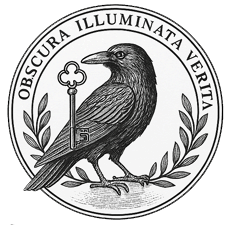StormCroft House Servants
Complete Record of Male Domestic Staff, 1870–1901 “They were not just staff. They were instruments of pattern, of perception, and, occasionally, of consequence.”
Overview:
Across its 31 years of structured operation, StormCroft House employed exactly fourteen male servants. This number was not advertised, but seemingly enforced. No more, no fewer. Staff rotated quietly, often leaving without notice. Those who remained longest often left the least behind.
Every servant was required to:
- Maintain dream journals
- Log silence periods from 02:00–04:00
- Avoid eye contact with the west-facing mirror near the Violet Corridor
- Submit to monthly memory retention reviews by the Initiative’s founding members
Three of the fourteen servants were Black men, a fact noted in private household records but absent from official payroll documents. Two others were South Asian, both adopted by Octavius Wren, though publicly listed only by role, not relation.
Jonathan Hales – Kitchen Porter
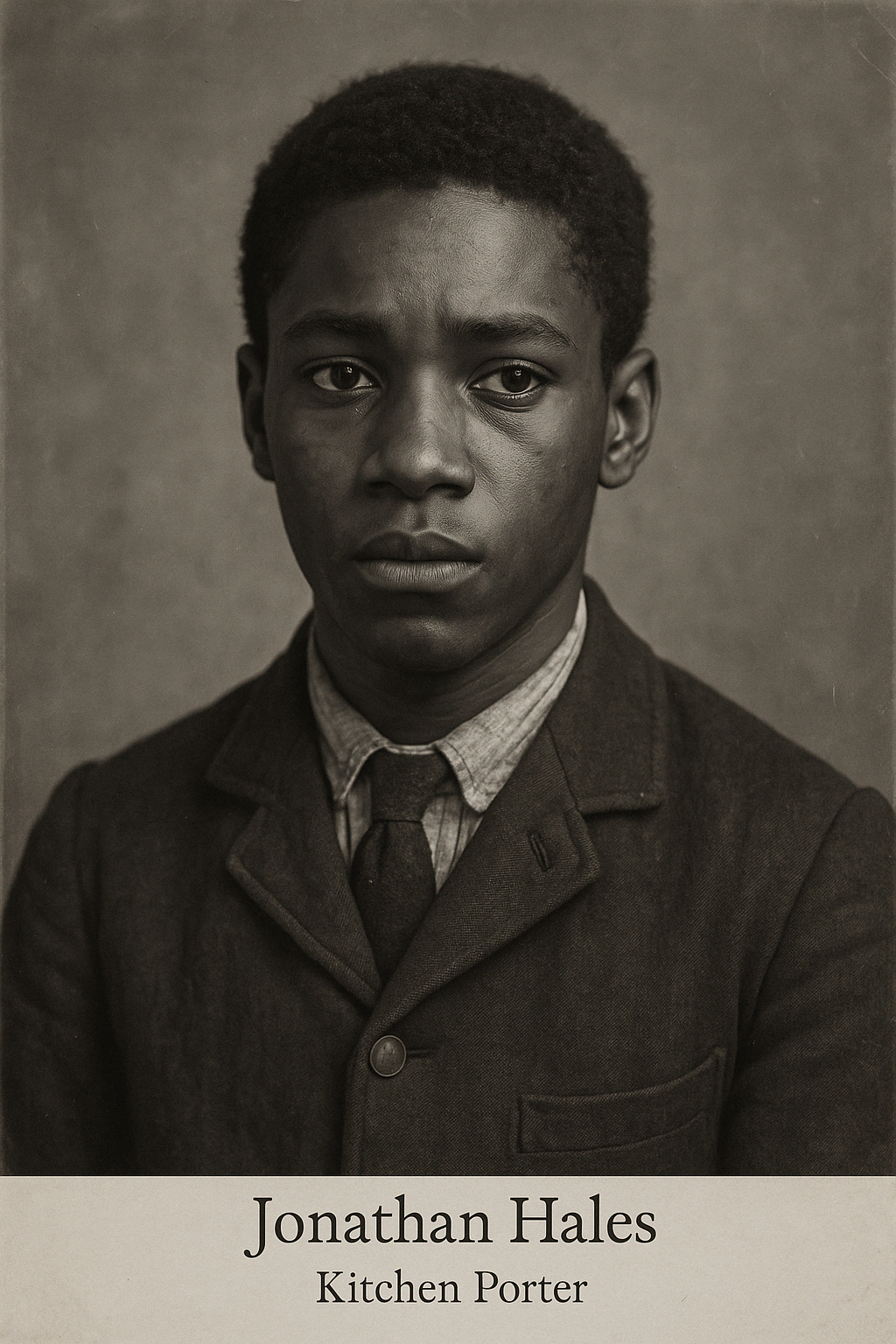 Age: 17
Age: 17
Service: 1887–1889
Ethnicity: Black British (Jamaican ancestry)
Notable for: Sensitivity to copper. Requested attic lodgings due to nightmares “of a bell under the floor.”
Fate: Disappeared en route to Exeter. Shoes found at Totnes Station, neatly aligned.
Kitchen Porter
Born: March 1870, Stepney, London (to Jamaican parents)
Entered Service at StormCroft House: September 1887 (age 17)
Disappeared: 11 April 1889
Last Seen: Totnes Station, Devon
Status: Presumed missing; items retained under Box 12-B Subfile: “The Bell Below.”
Early Life
Jonathan Hales was born to George and Ruth Hales, both second-generation Jamaican immigrants who had settled in London’s East End. His early years were marked by loss — Ruth died of consumption when he was nine, and his father, a railway porter, was reported missing during a night shift on the Docklands Line two years later. Jonathan was raised in the St. Bartholomew’s Overseers’ Refuge until age fifteen, where he excelled at quiet work and was often trusted with kitchen and furnace duties due to his “unusual heat sense.”
Letters recovered from the orphanage describe Jonathan as “sensitive, respectful, and prone to staring at reflective surfaces as though listening to them.”
Service at StormCroft House (1887–1889)
Jonathan was placed at StormCroft House through an anonymous recommendation — the name on his reference has been scratched out in the placement logbook, though a single initial remains: “F.” It is speculated that Dr. Abram Finch may have requested Hales directly following an incident involving auditory hallucinations experienced in the south kitchen.
Assigned Role:
Kitchen Porter (Midnight to sunrise shift)
Primary tasks included water-bucket maintenance, fire relighting, dry pantry rotation, and delivering meals to Finch’s study when requested.
Unusual Requests:
-
Asked to be housed in the attic quarters, far from the servants’ dormitories
-
Covered mirrors with linens nightly (against house policy)
-
Refused to descend into the scullery alone after his first week, citing “metal under the stone that breathes”
Private Life & Personality
Jonathan was described by Samuel Rooke (Linen Steward) as “kind-eyed, quiet, and humming when no one spoke.” He wrote poems in the margins of his supply ledgers — mostly rhythmic phrases about steam, bells, and shadows crossing thresholds.
He formed a tentative friendship with Alton Reys, the laundry assistant, who was also Black and similarly drawn to the “wrong sounds in the right rooms.” Several recovered dream journals written by Hales reference Alton, often calling him “the one who doesn’t flinch when the copper calls.”
Jonathan showed signs of sensitivity to high electromagnetic fields. His hands would tremble when handling copper piping, and he suffered migraines during resonance calibration days. This led to Octavius Wren reportedly referring to him in one memo as “our living detection coil.”
Final Incident & Disappearance
On 11 April 1889, Jonathan was granted a 3-day leave to visit his cousin in Exeter. He left StormCroft House with a satchel, a warm coat, and two books — one was a religious volume, the other a blank journal. He never arrived.
His shoes were discovered at Totnes Station, placed neatly against the outer edge of Platform 2. A ticket to Exeter was unclaimed. A porter recalled seeing “a boy with wide eyes, standing still as though hearing something no one else could.”
Inside his satchel — later recovered from a station bench — was a folded piece of paper containing only the words:
“The bell wasn’t under the floor. It was the floor.”
Legacy and Anomalies
-
After his disappearance, kitchen instruments that Jonathan had used regularly were found to vibrate slightly during silence periods.
-
One of his dream journals, sealed behind a loose pantry tile, contained a sketch resembling the Bell Chamber, though Jonathan had never officially been permitted inside it.
-
His name is recorded in Observation Case #44, filed by Finch in 1890 under the heading:
“Echoed Personnel: Still Active in Absence.”
A memorial notation remains carved faintly into the attic window frame: J.H. – Heard what came before. Left before it came again.
Samuel Rooke – Linen Steward
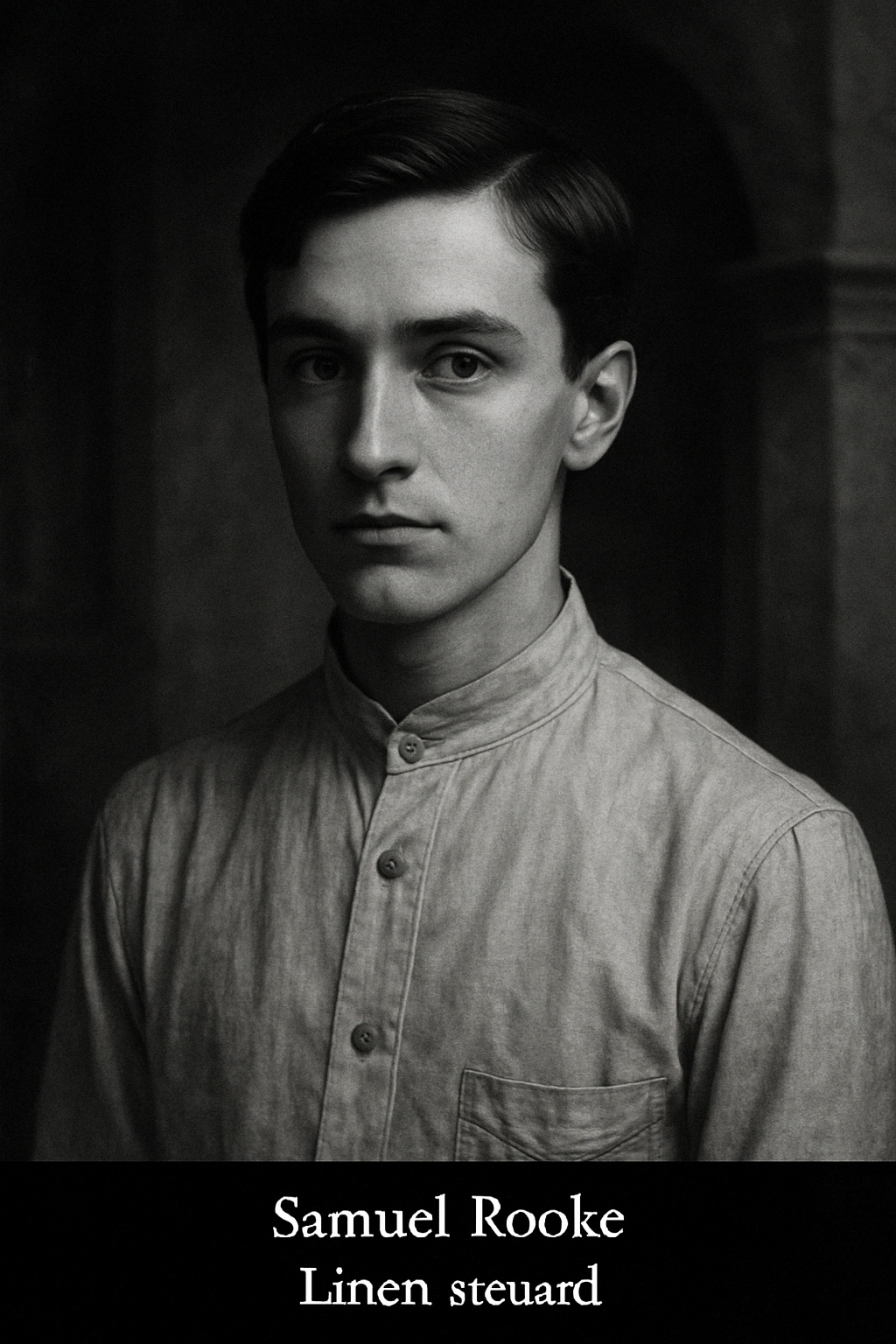 Age: 19
Age: 19
Service: 1886–1889
Notable for: Room temperature records and mirror writing.
Fate: Discharged after unconfirmed incident in the West Wing. Final journal: “The heat wasn’t fire. It came from behind the mirror.”
Linen Steward
Born: 2 August 1867, Salford, Greater Manchester
Entered Service at StormCroft House: October 1886 (age 19)
Departed: March 1889 (discharged)
Last Noted Phrase: “The heat wasn’t fire. It came from behind the mirror.”
Background
Samuel Rooke was born to factory workers in the industrial heart of Salford, the fifth of seven children. His early life was defined by soot, silence, and the sickly churn of textile machinery — an environment which may explain his later obsession with cleanliness and temperature regulation.
He was educated informally by a retired cleric who lived above the local washhouse. It was there, amid steam and starch, that he developed a fascination with symmetry, numerology, and the precise folding of garments. An apprenticeship at a private estate in Macclesfield introduced him to “linen lore” — the belief that cloth, especially worn cloth, held emotional impressions from its wearer.
A recommendation letter from that estate reads:
“Rooke possesses a steward’s hands and a scholar’s eye. Not one to chatter — but watch how he moves through a room.”
StormCroft House (1886–1889)
Samuel entered StormCroft House as the youngest ever linen steward appointed under the Wren household regime. Within one week of his arrival, he had reorganised the wardrobe archive into a system based on “thermal residue layering” — a technique he never explained aloud, but which aligned clothing by “how they remembered the wearer’s heat.”
He worked under supervision only briefly before being granted total autonomy of the second-floor linen vaults and west wing wardrobes.
Daily Rituals Included:
-
Logging exact room temperatures three times a day (he refused thermometers, preferring his own skin)
-
Refolding all garments that had been worn, even briefly
-
Washing only with rainwater, filtered through lead mesh
Personal Habits & Relationships
Samuel was introverted, austere, and prone to long silences — which earned him the respect of Dr. Lydia StormCroft, who once called him “a human barometer with folded hands.” He seldom joined staff meals and was never seen without his black ledger, which he filled daily with what appeared to be backwards writing, mirror-lettered notations, and room-by-room “memory tides.”
He shared a cautious companionship with Jonathan Hales, often exchanging linen-wrapped notes left in unused laundry chutes. One note, recovered after Hales’ disappearance, simply read:
“The floor dreams at body temperature. I think it’s begun to sweat.”
Despite his silence, several accounts describe Rooke’s habit of humming twelve-note sequences, always beginning in E minor and ending flat. Rowley Gant, the hall custodian, was once seen tapping his fingers in time with these hums through a closed door.
Incidents & Departure
In early 1889, a fire drill in the West Wing revealed that several mirrors had been altered — their glass replaced with near-perfect polished tin, allegedly by Rooke himself. When questioned, he said only:
“They told me the fire didn’t burn. It was the mirror that grew hot.”
Following that event, he was discharged quietly. No formal punishment was issued, but his black ledger was confiscated and placed in Box 12-D, Room Echo Risk Register. The final pages of that ledger were blank — except for one hastily penned line:
“Not a reflection — a pressure.”
Samuel was seen boarding a horse cart headed toward the coast but was never officially recorded arriving at his intended destination. A rumour persists among former staff that he was seen standing in the Violet Corridor, weeks after his departure, adjusting a tablecloth that had never been used.
Ongoing Presence
-
Initials ‘S.R.’ discovered etched in copper beneath the Quiet Loop plinth (unexplained, as the plinth was installed after his departure)
-
His personal handkerchief, monogrammed and oddly cold to the touch, was found sealed behind a disused wardrobe in 1984
-
Referenced obliquely in Finch’s notes as “The steward who folded temperature into memory”
An archival curator once described him as:
“The type of man who didn’t leave a room — the room simply forgot it had let him in.”
Thomas Elwick – Grounds Assistant
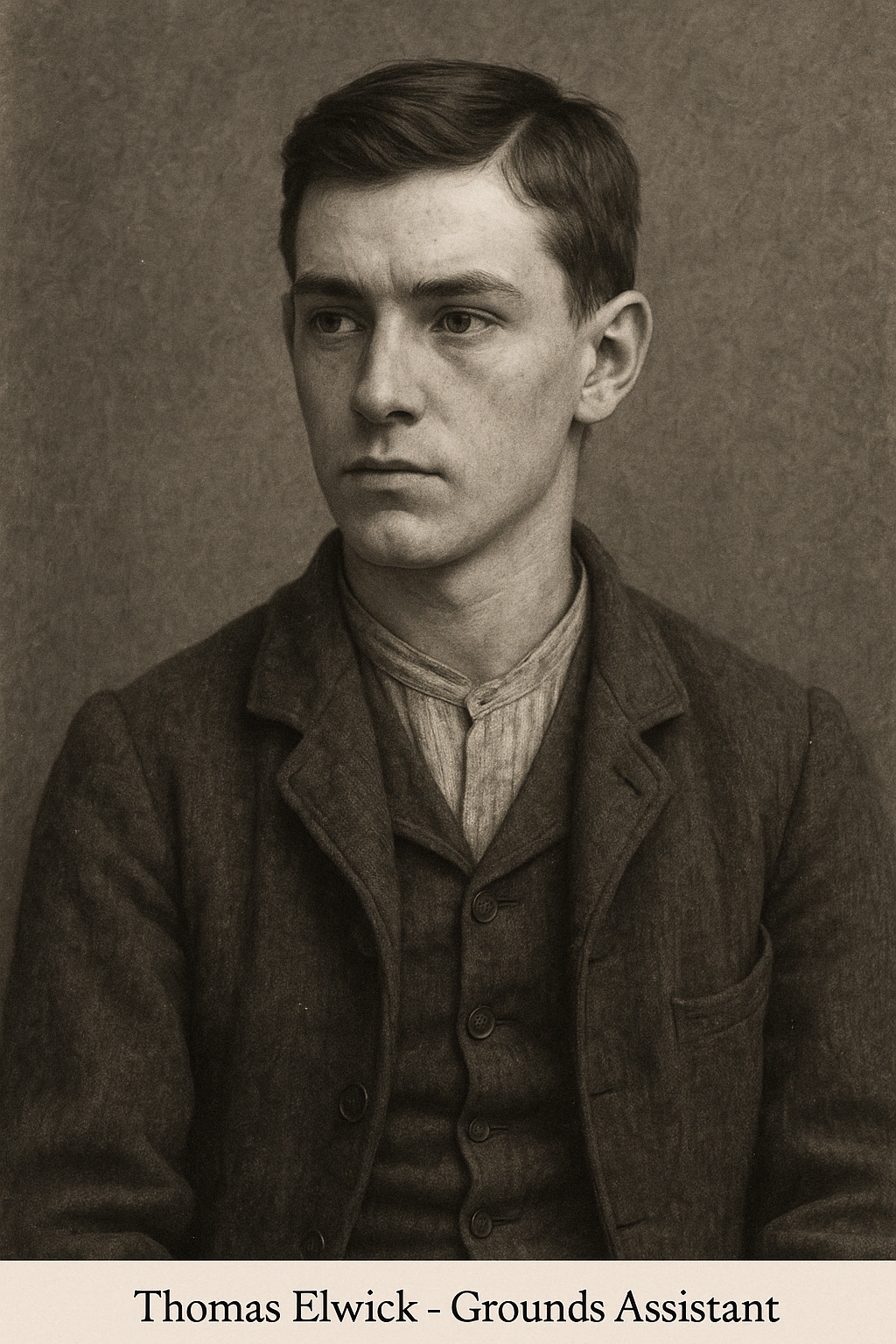 Age: 16
Age: 16
Service: 1887–1890
Notable for: Navigational instinct. Finch referred to him as “The Boy Who Hears Stone.” Fate: Payroll note reads: “Left. Or perhaps returned.”
Grounds Assistant
Born: 10 December 1871, Tavistock, Devon
Entered Service at StormCroft House: April 1887 (age 16)
Departure/Fate: Last recorded payroll entry: “Left. Or perhaps returned.”
Background
Thomas Elwick was born to a railway linesman and a stonecutter’s daughter. He was described by locals in Tavistock as “quiet, helpful, and always facing the wrong direction when spoken to.” He reportedly navigated the Devon moorlands without map or lantern, and was known for finding lost livestock by following “paths that weren’t there yesterday.”
Educated informally by a widowed schoolteacher, he was literate and unusually adept with numbers, though he rarely spoke unless directly addressed. His father’s abrupt death in 1884, crushed by a wagon at a spur junction near Princetown, is noted in several personal accounts as a formative silence in Elwick’s life.
Service at StormCroft House (1887–1890)
Thomas arrived at StormCroft House under an unregistered placement — no known agency handled his contract. Despite this, his name appears consistently in house ledgers beginning in spring 1887. He was formally listed as Grounds Assistant, responsible for hedge rotation, soil drainage, and western slope survey work.
However, internal notes show his duties extended beyond horticultural support. He was often reassigned — or rather shared — between core household members who trusted his instincts more than those of the full-time staff.
Relationship with the Morris Brothers
Elwick’s most enigmatic connection was to the Morris Brothers, StormCroft’s resident groundskeepers. Though they rarely spoke to others, the brothers were said to have “shared” Thomas — assigning him personal, non-documented tasks. These included:
-
Digging shallow trenches near the sealed root cellar, then filling them again by moonlight
-
Delivering polished stones and cloth bundles from the outer gardens to their locked cabin
-
Remaining absolutely silent while attending them during “listening rituals” performed between 3:00–4:00 AM beneath the greenhouse floor
Household gossip (which StormCroft tolerated only when it left no trace) suggested that Thomas slept in rotation with the brothers, often resting in their quarters rather than the servant hall. A surviving receipt lists “one cot, three bowls, no mirror.”
Finch referred to the trio in his unfiled report as “the symmetrical triangle that heard through roots.”
Personality and Behaviour
Thomas was gentle, prone to long stillness, and often found humming in repetitive three-note patterns, which some likened to early train whistles. When asked questions, he would often respond with exact geographic coordinates or time stamps — even when the context did not require it.
He was also reportedly seen entering Tunnel T-North alone, with no lantern or guide. When asked what he saw, he said only:
“The way it curves changes when you’re meant to turn.”
His affinity for the landscape extended into unsettling precision: he could recall the location of every stone shifted in the previous week and was able to identify where rain had fallen at night by scent alone.
Departure and Aftermath
In January 1890, Thomas was granted a short leave to visit his uncle in Ivybridge. The leave was never formally recorded as ending. He did not return — yet his boots remained by the back cellar door, clean, as if just polished.
The payroll for March 1890 includes his name — annotated only with:
“Left. Or perhaps returned.”
In 1922, a StormCroft structural inspector swore he saw a boy standing in the garden vault doorway. He described him as “young, muddy to the knees, and mouthing something into the dirt.” The photo taken at the time came back blank, except for the shape of three shadows stretching behind a figure no longer present.
Legacy & Residual Notes
-
In 1983, a small wooden tag bearing Elwick’s name was discovered buried beneath the conservatory. It was dated 1892.
-
One of the Morris Brothers’ notebooks, discovered decades later, simply reads:
“Thomas kept the doors shut. Even the ones he didn’t open.”
-
Echo patterns recorded in the soil vents still return a faint three-note hum — E, E, C.
Thomas Elwick remains a subtle but foundational figure in the StormCroft mystery. Not quite staff. Not quite guest. Possibly a witness. Possibly a keeper.
Elias Dunbridge – Assistant Archivist / Head Archivist
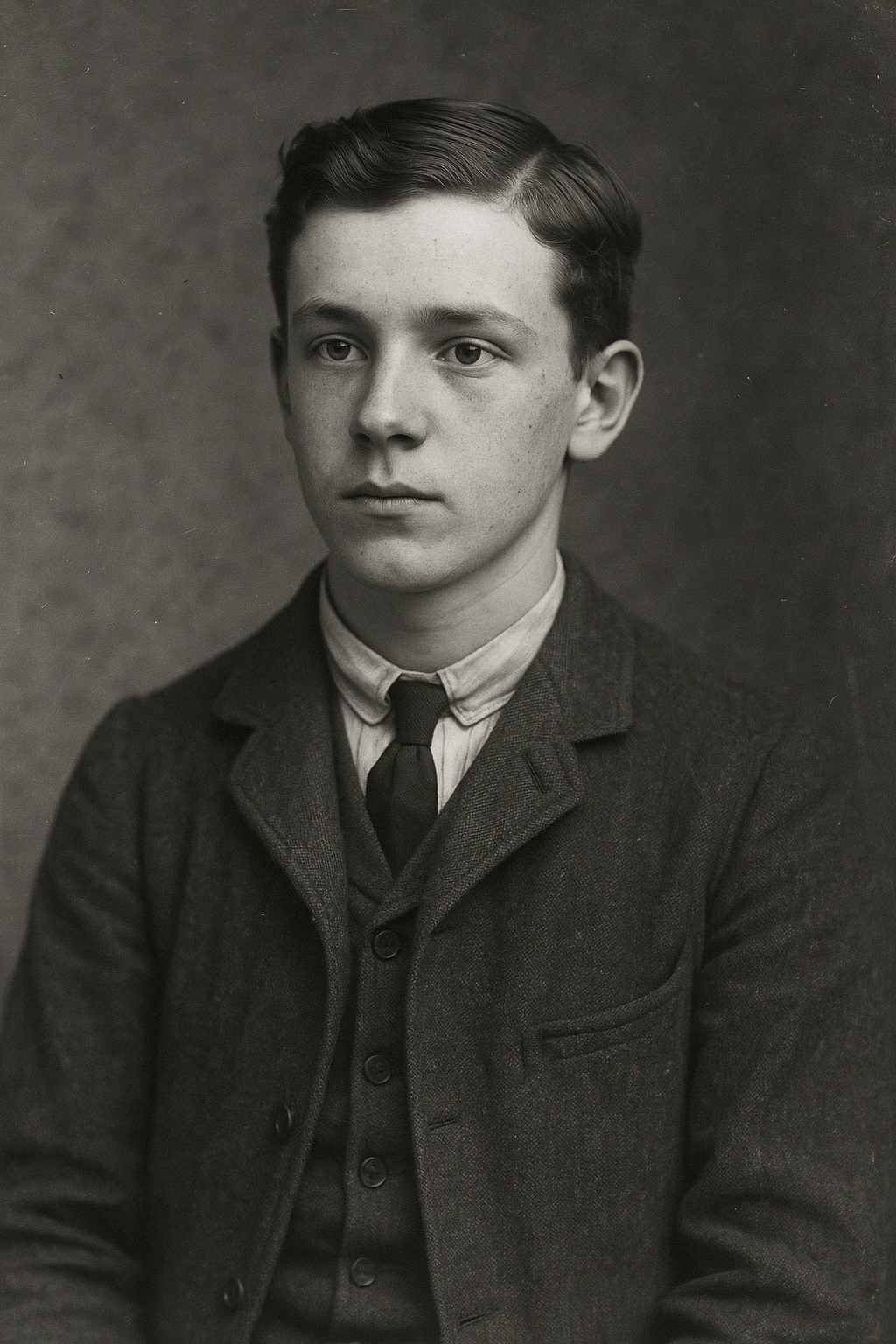
Age: 16
Service: 1866–1911
Notable for: Early archivist training, creation of Box 12 protocol, voluntary sensory deprivation routines. Fate: Went blind. Lived within StormCroft walls until death. Allegedly wrote his final records using soot and ash.
Elias was born to a family of rural weavers and minor land stewards in the village of East Coker — a hamlet steeped in old footpaths and fading superstition. His mother, Agnes Dunbridge, kept a personal book of weather dreams, while his father worked as a clerk to a fading chapel registry.
His quietness was noted early. He did not cry as a baby, nor speak until age six. But by age ten, he could memorise entire letters after reading them once, and was rumoured to write in reverse fluently — not mirrored, but as if to be read by something behind the page.
He was placed at the Langport weighhouse workshop in 1866, where he assisted the original founders of StormCroft — notably Thaddeus Bellamy, Nathaniel Horne, and Howard Brill — as a firebox assistant. It was during this time that he first became involved with logging early experimental device outcomes.
Rise to Archivist
By 1870, with the construction of StormCroft House underway, Elias had already become the default recorder of events, the only person who seemed capable of remembering experiments no one else could properly describe.
After the mysterious disappearance of Bellamy in 1890, Dunbridge was officially granted the role of Head Archivist, although by then he had already begun referring to himself — without approval — as “The Keeper of the Interior Record.”
He designed and maintained the Box Classification System, including:
-
Box 12: Devices that spoke (or responded to being spoken to)
-
Box 6: Repeated motion mechanisms
-
Box Null: Items that could not be touched directly
He also established the now infamous Echo Tally Boards: wooden ledgers used to track which personnel had been present for phenomena that did not officially occur.
Personality & Habits
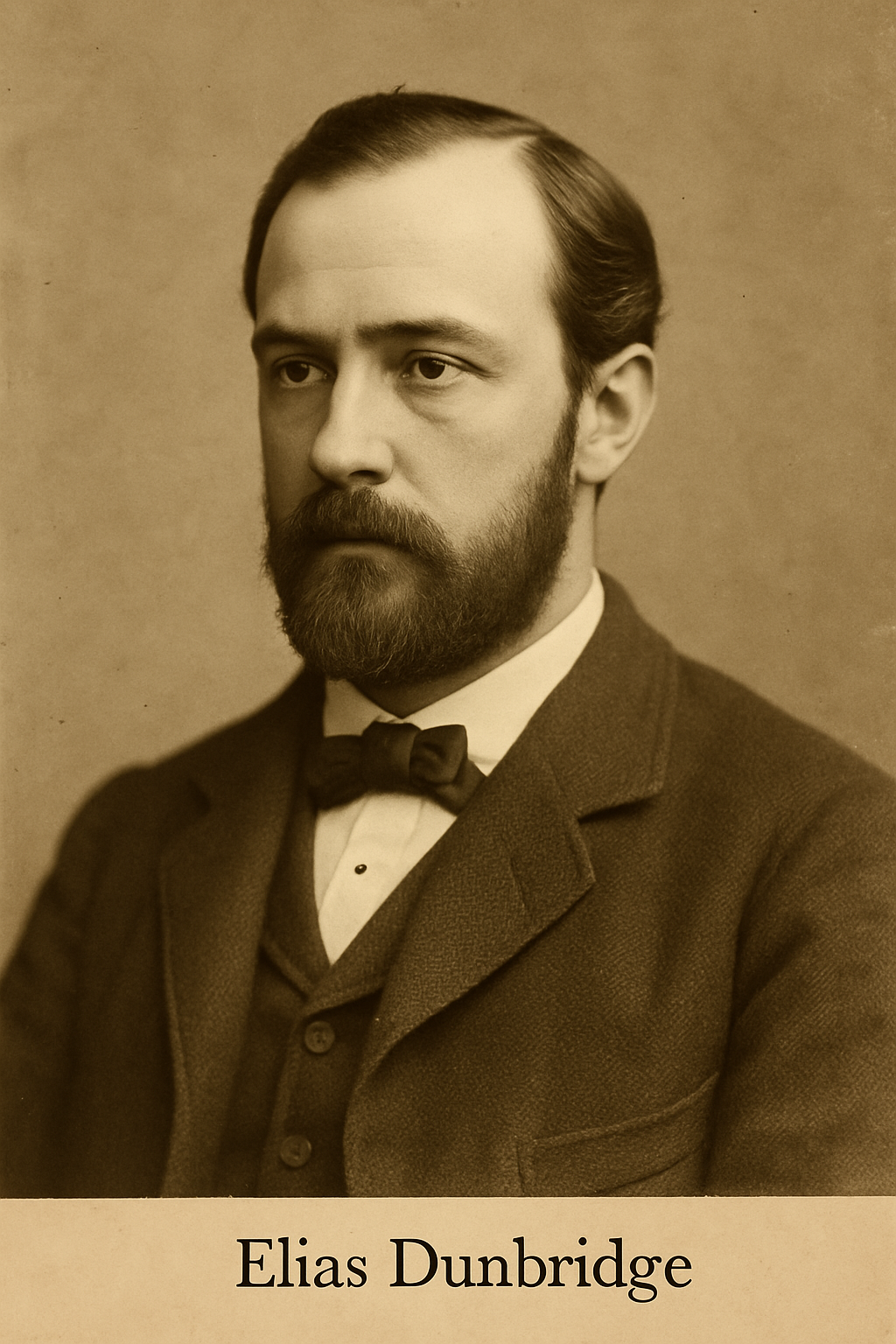
Dunbridge lived alone within the estate from 1878 onward. He slept in the narrow study beneath the conservatory stairs, where he kept only:
-
A small cot
-
An inkstone
-
17 pens (all facing west)
-
A broken compass turned upside-down
He was described by fellow staff as:
-
“Polite, but very far away”
-
“Smelled faintly of coal dust and moss”
-
“Never looked you straight on — always slightly to your left or right”
He spoke rarely, and when he did, often in questions. One servant noted:
“He never asked you what you were doing. He asked you what the house thought you were doing.”
Ritual & Private Practices
-
Wrote extensively in ash and lampblack across the backs of mirrors and unused chalkboards
-
Required total silence in the archive between 2:15 and 2:45am, which he claimed was the “folding time”
-
Once created a “mirror index” of servant expressions, filed under “Reflected Behaviour During Containment Events”
-
Fasted regularly on Thursdays “to allow memory room to stretch”
Relationships
Elias maintained formal but significant relationships with the StormCroft founders:
-
Dr. Lydia StormCroft respected his categorisation methods, once calling him “our second spine.”
-
Octavius Wren distrusted him, referring to him in marginalia as “The Archivist of Doubt.”
-
Dr. Abram Finch engaged Dunbridge in experimental echo tests, where Elias could reportedly “recall tones not yet played.”
Servants feared and respected him equally. Rowley Gant once called him “the ghost we were meant to leave alone.”
Decline and Death
In 1907, Dunbridge began to lose his sight. Instead of withdrawing, he doubled his recording efforts — dictating to the Observation Lounge walls using a slate stylus and later reciting entire logbooks aloud in perfect order.
By 1909, he had confined himself fully to Box Room A, refusing food and speaking only in reverse. On the final night of his life (1911), a junior attendant reported hearing him say:
“If memory is a room, mine has just opened its third door.”
He was found lying peacefully on a stack of unfiled papers, blind but smiling faintly. His final record, etched by hand into the underside of his cot, reads:
“I have archived the forgetting. You must now remember to leave it alone.”
Legacy
-
His ledger system remains partially intact in Vault C of the Langport Facility.
-
Box 12, still sealed, was designed entirely under his logic structure.
-
A segment of bone, labelled “DUNBRIDGE (WITNESSING RADIUS)”, was found in the Quiet Loop in 1984 — likely symbolic, but disturbingly well preserved.
The archivist never left. He just folded further in.
The Morris Brothers – Groundskeepers
Detailed biography here
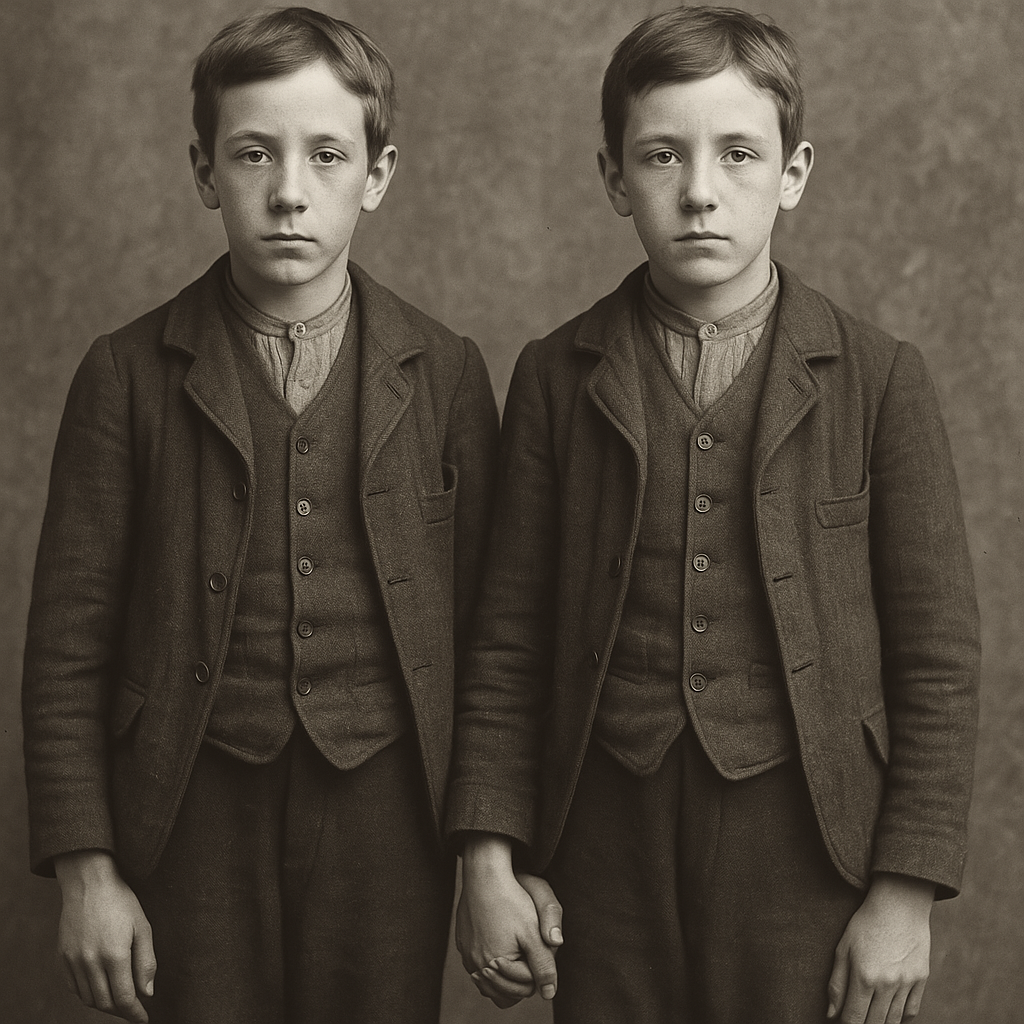
Ages: Estimated mid-20s
Service: 1873–1881
Notable for: Speaking in unison. Left no personal effects. Fate: Entry reads: “No longer observed.”
Shared Indulgences & Internal Observation
Extract from Memo 22c – “Servant Rotation Notes: Unauthorised Requests”
Filed under: Sub-Level Staff Usage, 1875–1881
Archivist’s Note: “Though no formal violations occurred, these observations remain psychologically suspect.”
The Morris Brothers, whose presence on StormCroft grounds was never formally explained nor challenged, maintained a strict and wordless discipline during daylight hours. However, it became clear by autumn of 1877 that their behaviour in private — particularly during lunar shifts and atmospheric pressure drops — became ritualistic, and at times triadic.
Thomas Elwick, then a boy of sixteen and newly appointed Grounds Assistant, was most frequently “summoned” by the brothers for unclear duties. Though never harmed, he was required to be present during long periods of stillness and mutual observation, wherein the brothers would take turns watching one another while Elwick performed menial tasks, often shirtless, blindfolded, or instructed to “move without making sound.”
Elwick later confided to Samuel Rooke (via linen-wrapped note) that:
“It is not that they look at me. It is that they see each other through me.”
There are multiple entries across the Quiet Loop logs noting that during these episodes, the brothers mirrored each other’s posture and breath, sometimes for hours, while the servant acted as an external witness — or, as one unsigned memo called it, “the third fulcrum.”
In one recorded session, Alton Reys was seen leaving the greenhouse trembling, his shirt soaked and mouth open, yet unable to speak for nearly 30 hours. His silence was later blamed on “temperature shock,” though his journal simply read:
“One brother watched. One brother remembered. I was what passed between them.”
The indulgences — as the brothers referred to them in scrawled, coal-dust notes recovered from behind their sleeping cot — seemed to serve no physical need, but rather a compulsive need to be witnessed in reflection. There was no intimacy in the conventional sense. Only precision, ritual, and mirror logic.
StormCroft never censured these behaviours. In fact, Dr. Finch approved the behaviour in one document with the chilling margin note:
“Their arrangement maintains internal symmetry. Do not interfere. Observation is a form of containment.”
Willet Gorse – Under-Gardener
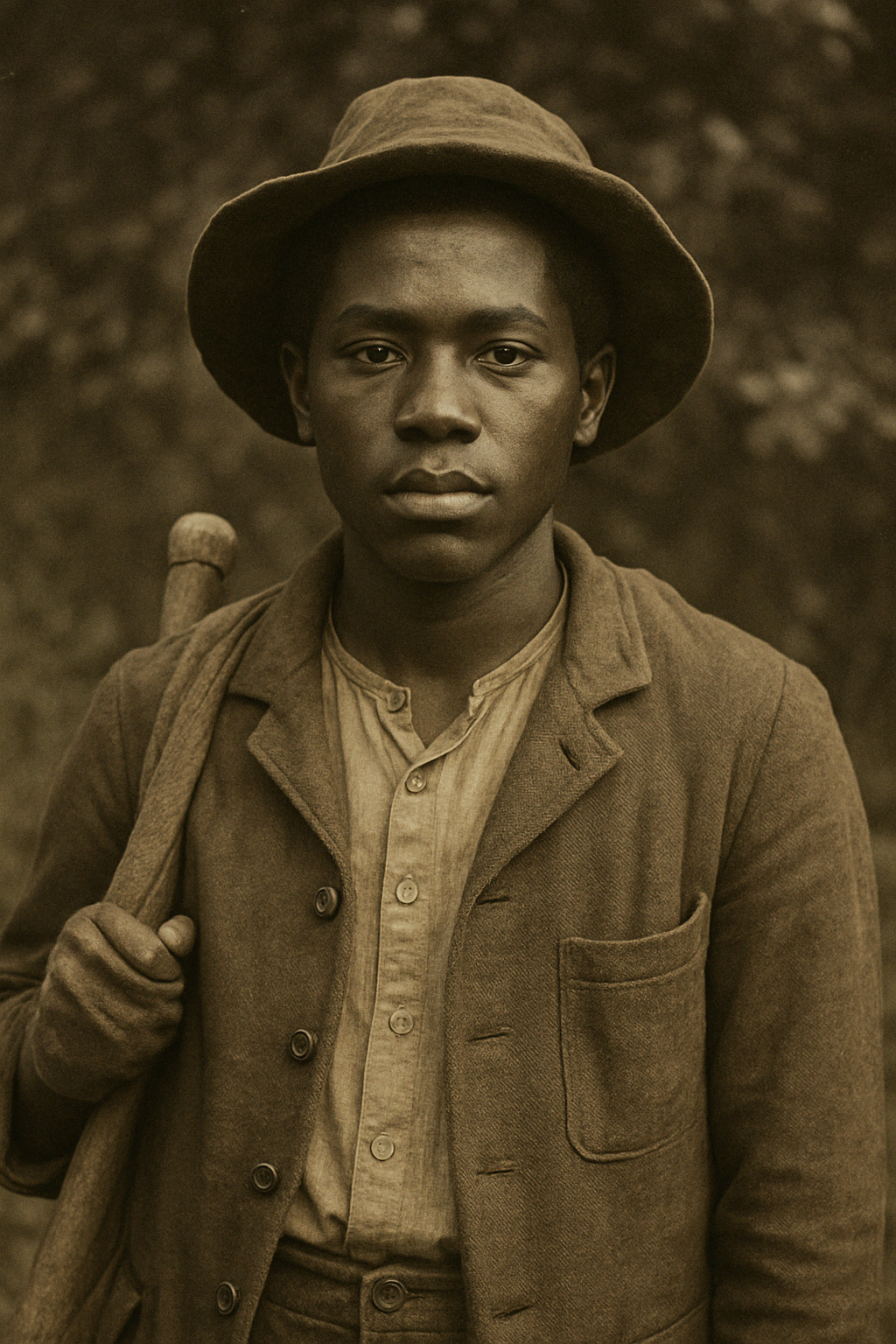
Age: 18
Service: 1875–1879
Ethnicity: Black British
Notable for: Repeating dreams involving soil echo. Wrote field songs in reversed phonetics. Fate: Committed to Glaven Hollow Sanatorium. Claimed “the trees remember their shadows.”
Under-Gardener
Born: 3 May 1857, Lewes, Sussex
Entered Service at StormCroft House: March 1875 (age 18)
Removed from Staff Record: July 1879
Last Recorded Status: Committed to Glaven Hollow Sanatorium, Norfolk
Final Quotation: “The trees remember their shadows.”
Background
Willet Gorse was born to a freed sailor of West Indian descent and a laundress in Lewes, Sussex. He grew up near the railway embankments, where his early years were spent amongst hedge-bound fields and damp canals. A quiet child, he was known to sit motionless for hours, listening to the ground — “not dreaming, just translating,” according to one family friend.
Little is known about his formal education, but he possessed an innate fluency with plants, especially root systems. By age twelve, he had devised his own pruning method called “shadow-nesting,” in which cut branches were arranged to mimic the position of sunlight at dusk.
He was employed briefly at a private estate near Midhurst, but left suddenly after claiming the hedge maze had changed overnight “without human intervention.”
Life at StormCroft House (1875–1879)
Willet was brought to StormCroft House during the height of its so-called Green Veil Expansion, a brief period when the house’s gardens, vine corridors, and sub-cellar moss channels were expanded and infused with experimental biodiversity — including heat-responsive thorns and directional ivy.
He served under the Morris Brothers, though he was never seen working beside them. His official duties included:
-
Soil humidity maintenance
-
Gravel trace alignment for auditory surveillance
-
Root-wrapping and mulch phrase placement (an early psychobotanical experiment under Dr. Finch)
His private logbooks, recovered in 1984 from a rusted crate in the boiler garden, include notes such as:
“The dirt below the statue is warmer than the statue itself.”
“Second greenhouse sighs in time with breath.”
“Tonight the flowers face north — again.”
Personality & Speech
Willet was noted by other servants for his gentle speech and his tendency to hum folk songs backwards. His voice was low and always slightly hoarse, likely from inhaling peat dust and root ash.
Jonathan Hales is believed to have shared late-night garden rounds with Willet, though no written correspondence survives. A whisper in the 1888 house ledger reads only:
“W.G. knew which plants wouldn’t let you lie.”
Dream Journal Entries (Selected)
All servants were required to submit dream logs. Willet’s were often poetic and non-linear:
-
“A staircase of roots, winding downward. The bell rings above, but the soil swells with the reply.”
-
“Moss inside the mouth. I spit and the words come out greener.”
-
“I held the sun under my nails. It tried to scream.”
Finch once annotated one entry:
“Psychogenic flora contamination possible. Assign shadow-pair for monitoring.”
Removal and Sanatorium Commitment
In June 1879, Willet was found kneeling at the edge of the sunken path behind the bell vines, hands buried to the wrists, face turned upward, eyes shut. When approached, he whispered:
“Not me. Them. They’re remembering downward.”
After this incident, he was removed from duty and placed under quiet care at Glaven Hollow Sanatorium, where he remained for the rest of his life. Records from Glaven Hollow describe a patient who:
-
Refused to sleep on anything but soil
-
Drew root diagrams in chalk and salt
-
Spoke to windows, but only during overcast hours
His death is recorded in 1906, cause: “respiratory collapse due to sustained posture and stress-induced flora inhalation.”
Legacy
-
His hand-made trowel, designed with a mirrored edge for “light alignment,” remains in Box 6A, Soil Implements – Risk Class II
-
Root systems beneath the northeast wall still form patterns identical to sketches found in his dream journals
-
Finch, in a rare moment of personal writing, described Willet as:
“The first to feel the house’s growth — not architectural, but vascular.”
Hector Lume – Pantry Steward
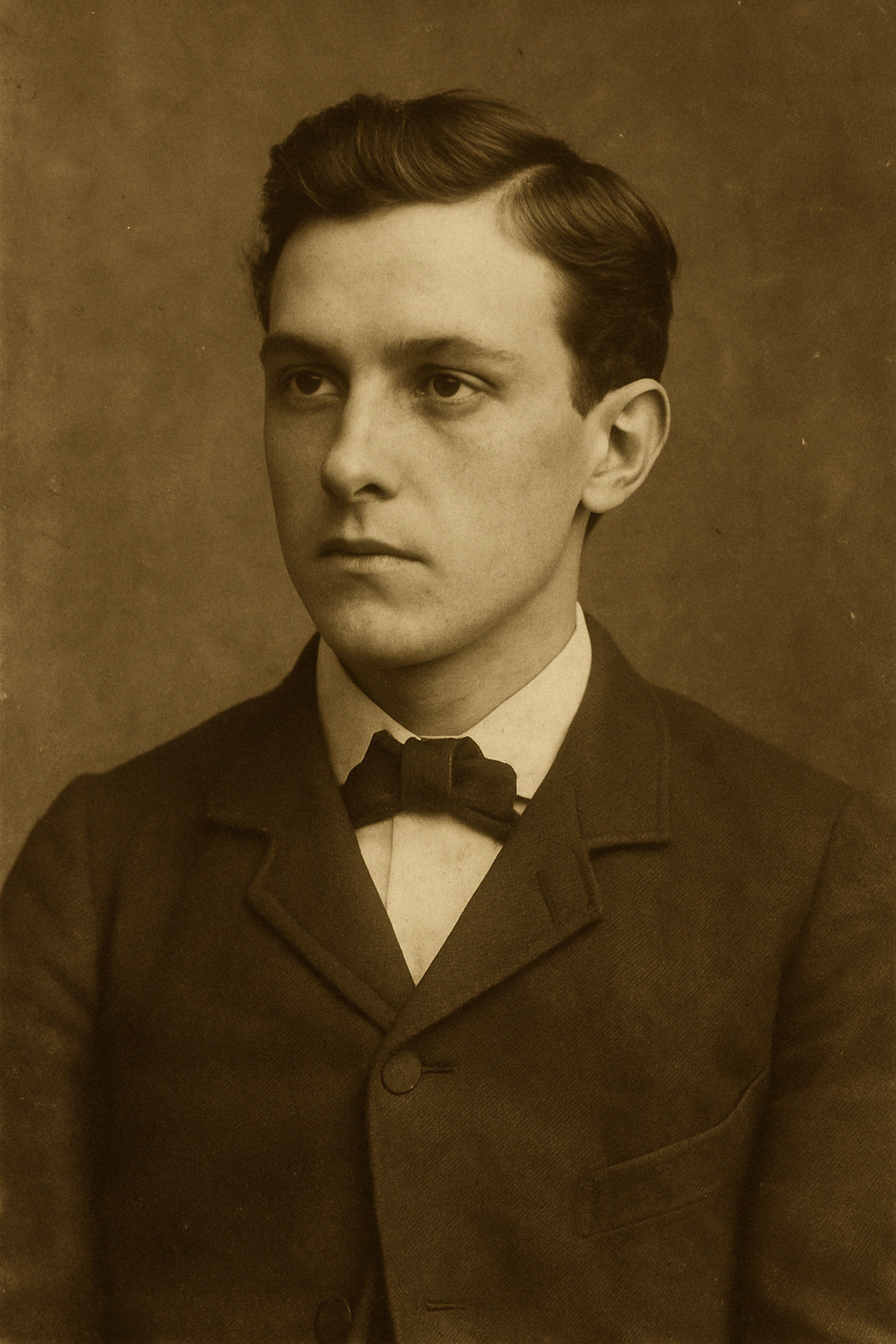
Age: 22
Service: 1871–1874
Notable for: Rigorous inventory of items never recorded in house purchase logs. Fate: Dismissed after vocalising the Bell Sequence unsupervised.
Pantry Steward
Born: 14 February 1849, Gravesend, Kent
Entered Service at StormCroft House: August 1871 (age 22)
Dismissed: October 1874 (for unsanctioned vocalisation of Bell Sequence)
Status: Final whereabouts unknown
Filed under: Inventory-Based Anomalies & Verbal Transference Protocols
Background
Hector Lume was born in the Thames-side port of Gravesend to a family of dock tallymen and grocers. His father died young, crushed beneath a mislabelled crate of copper piping, and his mother supported the household as a ledger assistant for the Gravesend Storage Company.
Young Hector was raised amid manifest sheets, crates, coded shipping stamps, and constant correction. By age ten, he could balance a ledger by smell — reportedly able to detect spoiled rice from the ink it was recorded with.
He was apprenticed to the local magistrate’s personal chef, where he managed storeroom organisation and began keeping private records of unlogged items — including ones that, according to official lists, had never arrived.
His apprenticeship ended abruptly after a night in which Hector refused to re-enter the pantry, claiming that “the spices had changed their order.” He was dismissed and briefly institutionalised before being released into private employment.
StormCroft House (1871–1874)
Lume was recruited to StormCroft via silent referral, likely by Dr. Abram Finch, who was at the time conducting experiments in “auditory inventory response” — a theory suggesting that long-stored items retained a passive awareness of their use and neglect.
As Pantry Steward, Hector was responsible for:
-
Organising sealed goods, including items not listed in procurement records
-
Managing dry stock rotation by “seasonal tonality” (a classification he devised himself)
-
Logging temperature shifts inside containers without opening them
-
Submitting weekly Resonance Maps of the inner pantry door, drawn in salt or powdered sugar
He referred to the pantry as “the quiet stomach of the house” and claimed that “if it grows restless, so will the rest.”
Personality & Rituals
Lume was meticulous, restrained, and strangely devotional in manner. Staff reported he spoke to himself softly in rhyme — often while facing labels or sealed cupboards.
He kept a personal codex of objects he claimed “didn’t belong” — a list that included:
-
A jar of pickled quail eggs that reset its position every morning
-
A tin of milk powder that absorbed sound
-
A bottle of clove oil that smelled stronger during Finch’s headaches
Lydia StormCroft once referred to Lume as “our mnemonic priest — he logs what we overlook.”
He was not close to other servants but is recorded sharing two silent lunches with Willet Gorse, during which neither man spoke, but both stared at the same pantry key on the table for over an hour.
Incident and Dismissal
On the night of October 3rd, 1874, Hector was found in the pantry, standing completely still with the inventory chalk in one hand and the pantry ledger open to a blank page. He was heard softly singing a sequence of tones, now believed to be a version of the Bell Sequence, a dangerous harmonic protocol associated with spatial dissonance and time-fracture reports in the west wing.
When asked who taught him the sequence, he reportedly replied:
“It’s what the sugar whispered when I turned the key too far.”
He was removed from service the next day. His personal effects were found sealed inside a container marked “Thyme – Dec. 1872”, though no record of him placing them there exists.
The pantry has since been fitted with dampening cloth, and Finch’s margin note in the pantry ledger reads:
“Lume cracked the container code. He heard the items praying for use.”
Aftermath & Residue
-
The salt bin he last touched no longer accepts new salt — all added crystals dissolve into syrup
-
One page of his private codex remains: it reads “9 jars awake / 3 feign / 2 want to leave / 1 dreams of the tongue”
-
He is believed to have attempted re-entry to the house in 1880, appearing at the back gate, speaking only in ingredients
His final whereabouts remain unknown, though StormCroft has recorded at least four pantry-related echoes matching his voice.
Alton Reys – Laundry Assistant
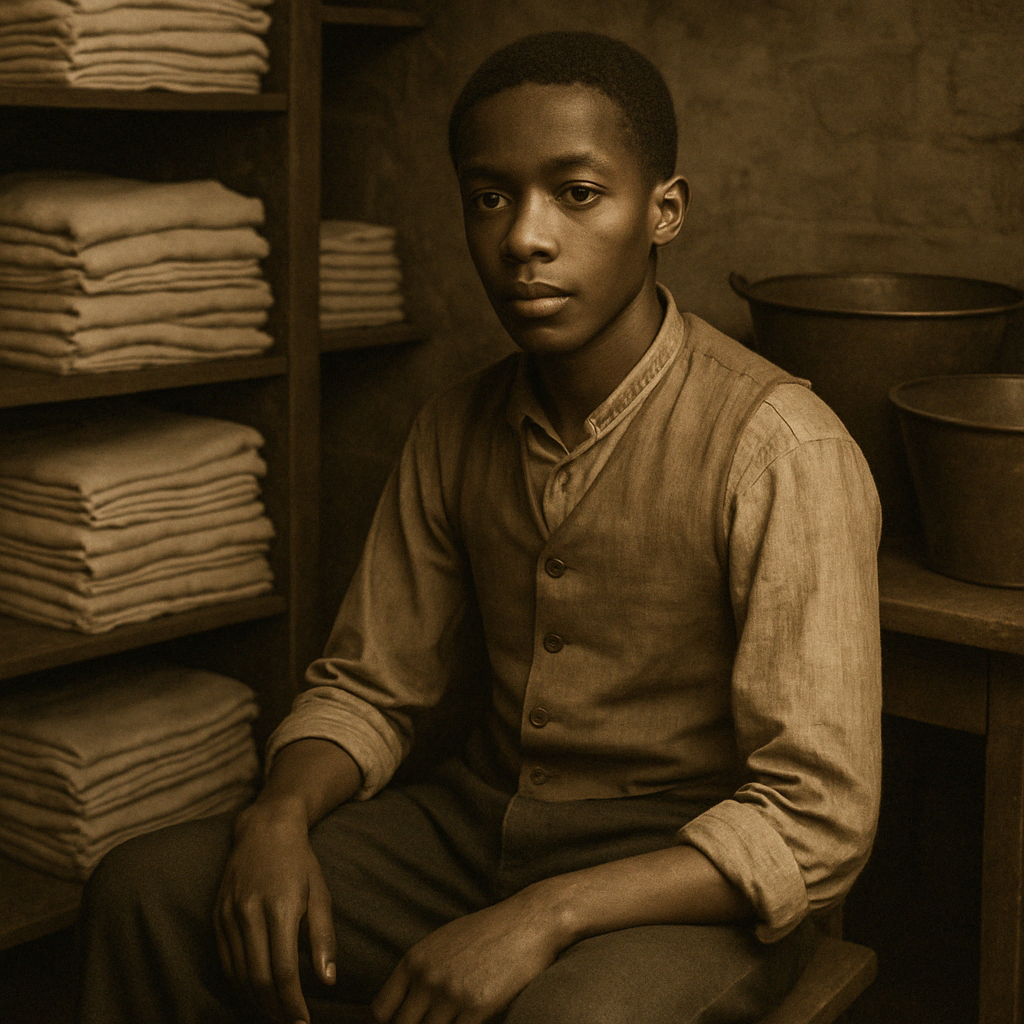
Age: 15
Service: 1880–1883
Ethnicity: Black British (Sierra Leonean heritage)
Notable for: Left-handed, sang during silence periods (but only in basements). Fate: Claimed to have “walked through Room 37 and out the other side.” No one saw him leave.
Laundry Assistant
Born: 22 July 1865, Freetown, Sierra Leone
Relocated to England: 1873 (orphaned and adopted by a naval engineer)
Entered Service at StormCroft House: October 1880 (age 15)
Final Record: “Claimed to have walked through Room 37 and out the other side.”
Departure: Unrecorded. Disappeared 1883. No known reappearance.
Background
Alton was born in Freetown, Sierra Leone, into a small community of Creole traders and linguists. His early life was marked by the loss of both parents during a coastal illness outbreak in 1872. He was brought to England the following year by Commander Walter Reys, a retired Royal Navy engineer and known StormCroft sympathiser, who adopted Alton and raised him in Chatham, Kent.
Reys received a fragmented but intense education. He was taught English, Yoruba, and Latin, and was rumoured to have been able to count rhythmically in over twenty dialects. From an early age, he exhibited an innate sense of pattern — particularly in water flow, steam movement, and folded fabrics.
He was sent to StormCroft House in 1880 through a personal referral from Commander Reys, who believed Alton would be “attuned to the shifts others ignore.”
Life at StormCroft House (1880–1883)
Alton entered service as Laundry Assistant, officially responsible for:
-
Sorting and folding personal linens
-
Monitoring the humidity levels in the wet chamber
-
Steam-regulating the towels used in the Violet Corridor (a task only assigned to two others across 20 years)
But over time, his duties became increasingly peculiar — and difficult to trace.
Staff observed him:
-
Spending hours alone in the drying loft, humming low melodic loops
-
Singing softly in unknown languages only while underground
-
Writing backwards phrases on fogged glass, none of which remained legible once dry
He was left-handed, preferred to work barefoot, and insisted on hanging garments in non-standard angles, based on “where the weight wants to go.”
Behaviour & Instinct
Alton rarely spoke unless spoken to. When he did, it was often in brief, poetic fragments.
From the dream journals he submitted (several of which are now held in Box 8: Temporal Dislocation Residue), entries include:
“Today the soap whispered of drowning in cotton.”
“The wet steps do not echo. They absorb.”
“When the sleeve falls down, it remembers the arm it held.”
Thomas Elwick reportedly shared several late-shift routes with Alton. In a note recovered in 1986 beneath the service staircase, Elwick had written:
“Alton walks like the corridors remember him. I think he’s walked here before — just not this time.”
Incident with the Morris Brothers
Though Alton was not directly under the Morris Brothers’ supervision, they are recorded as having requested his assistance at least four times. In one instance, Alton was seen leaving the sealed greenhouse, pale and silent. He did not speak for nearly 30 hours.
His journal entry that night read:
“I watched them watch each other. I was the cloth between.”
Room 37 Event & Disappearance
On 17 March 1883, Alton was seen entering Room 37, believed to have been left unlocked mistakenly during document relocation. The room, colloquially known as “The Refusal Room,” was rumoured to un-teach memory, distort perception, and occasionally close with more inside than had entered.
He was witnessed walking in calmly, barefoot, with a folded bedsheet over one arm.
No one saw him leave.
Hours later, the same folded sheet was found laid neatly on the hallway bench outside the room — slightly warm, faintly humming.
The record in the House Ledger reads:
“A.R. not absent. Perhaps completed transit.”
Legacy & Phenomena
-
His name reappears on moisture-warped laundry slips found in the Quiet Loop furnace room decades later
-
A linen tag marked “A.R.” was discovered behind the sealed cistern in 1997 — dry, clean, and stamped with a date: 22 July 2025
-
Residual audio tests in the laundry basin register a faint, rhythmic exhalation every equinox, always in 3/4 time
Dr. Finch, when asked about Alton Reys in 1889, reportedly muttered:
“That boy wasn’t folded into the sheets. The house wrapped him for later.”
Darby Fitch – Firebox Attendant
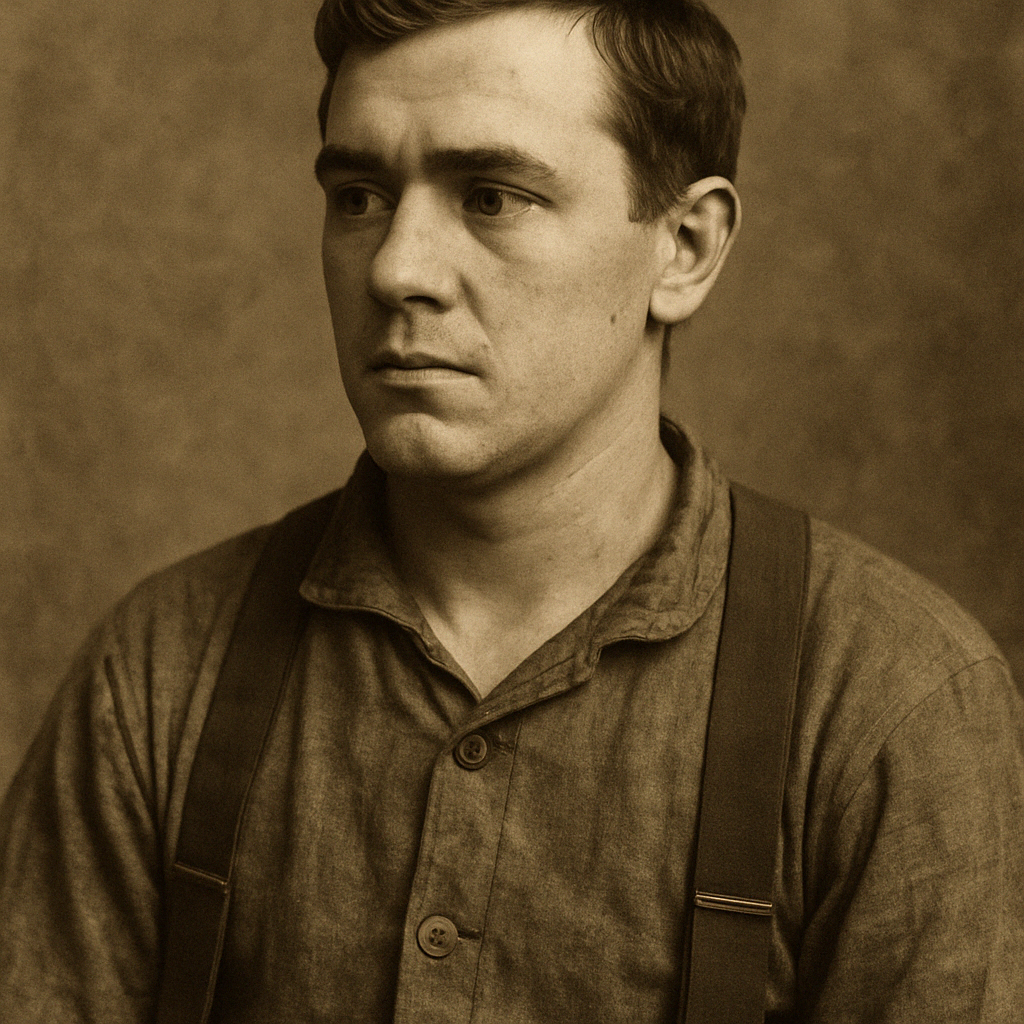
Age: 20
Service: 1872–1876
Notable for: Tended to unseen furnaces. Recorded soot patterns as musical notation. Fate: Went missing during snowstorm. Boots found warm beside Bell Chamber threshold.
Firebox Attendant
Born: 18 January 1852, Smethwick, West Midlands
Entered Service at StormCroft House: November 1872 (age 20)
Final Entry: January 1876
Disappearance: During a winter storm — boots found warm beside the Bell Chamber threshold
Filed Under: Combustion Anomalies / Sustained Thermal Echo
Background
Darby Fitch was the son of a foundry stoker and a part-time church cleaner. Raised among smoke and rivets, he developed an unusual intimacy with fire from an early age. He never feared heat — in fact, he often stood dangerously close to industrial boilers as a child, claiming to hear them “singing low.”
He left formal schooling at eleven but kept a personal notebook in which he copied overheard phrases, factory bell patterns, and (most notably) furnace temperatures as though they were prayers. That book — “The Tally of Flame” — survives only in fragments.
Fitch worked in multiple Midlands engine yards, but was frequently let go due to his habit of stoking fires in patterns unrelated to operational necessity. He once told a supervisor:
“Fire doesn’t burn the same when it’s being watched. It curves.”
Life at StormCroft House (1872–1876)
Hired at 20, Fitch was brought in not to maintain heat, but to manage the resonance field of the house’s furnaces, which were not all mechanical. StormCroft used a combination of coal-fired and sympathetic fireboxes — devices that “responded to emotional presence and memory density.”
His duties included:
-
Lighting experimental heat ducts beneath the Quiet Loop
-
Monitoring “mirror soot accumulation” for signs of memory echo
-
Ensuring that certain fireboxes never went out, even if unused
Fitch worked in near-total silence and rarely entered the main house during daylight. It is believed that at least one of the east sub-basement fires was of a kind no longer fully understood — sometimes described as “self-referencing” flame, capable of heating rooms that had never existed.
Personality and Rituals
Fitch was soft-spoken but physically powerful. He never wrote anything down, but reportedly recited boiler temperatures from memory weeks after readings. Staff noted that he often sat beside lit grates with his eyes closed, as if listening for something.
He:
-
Burned one glove per week, always the left
-
Carried soot in a small leather pouch
-
Described fire not as energy, but as “a waiting thing, shaped like longing”
He rarely interacted with staff, though Willet Gorse noted in a margin:
“Fitch doesn’t speak, but he replies. You just have to listen where it’s warm.”
Final Incident and Disappearance
On 19 January 1876, during a blizzard, Fitch was assigned to relight the secondary fireboxes beneath the Bell Chamber. He took with him a bucket of cinders, a brass tongs, and a scrap of parchment marked with a sigil used only by Dr. Finch.
He did not return.
The next morning, his boots were found by the door to the Bell Chamber — perfectly warm, dry despite the storm, toes pointed inward. A spiral of soot led from the threshold to the stone hearth, which was cold and clean — as if never used.
His soot pouch was found hanging on the back of the door.
An entry in the echo register that evening logged a flickering noise in the sub-basement furnace room, described as:
“Faint breathing. Rhythmic. Accelerating. Like bellows made of skin.”
Legacy & Unresolved Notes
-
The firebox beneath the Bell Chamber, sealed since 1876, still radiates low heat, despite no known fuel source
-
A soot impression resembling Fitch’s left hand was found beneath the Quiet Loop in 1982, 15 feet underground
-
Dr. Finch, in his closed research notes, wrote:
“Fitch did not feed the fire. He fulfilled its memory of being fed.”
A final soot mark, roughly the size of a man’s heart, was discovered burned into the back wall of the main coal room. Inside it was scratched one word:
“Stay.”
Clifton Shaw – Carriage Keeper
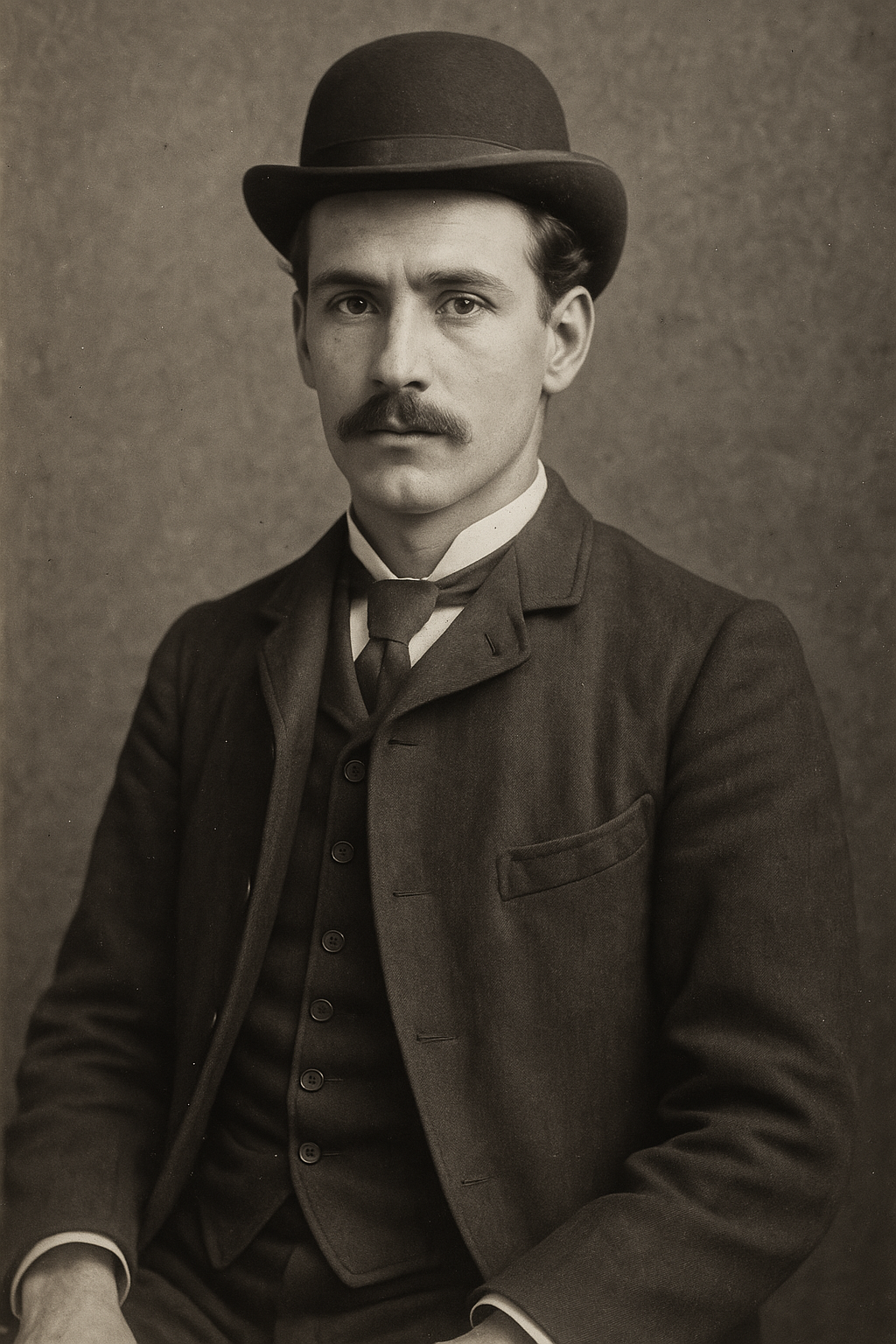
Age: 28
Service: 1884–1888
Notable for: Routinely reported non-existent deliveries from sidings. May have interacted with the Princetown rail spur. Fate: Letters from 1902 describe “riding unseen tracks.” Presumed lost.
Carriage Keeper
Born: 17 June 1856, Swindon, Wiltshire
Entered Service at StormCroft House: March 1884 (age 28)
Final Record: Departed service August 1888
Last Known Communication: Letter from 1902 referring to “riding unseen tracks”
Status: Presumed vanished
Filed Under: Transit-Adjacent Personnel / Princetown Anomaly Registry
Early Life & Background
Clifton Shaw was born near the Great Western Railway works in Swindon. His father was a pointsman; his mother ran a boarding house for transient engineers. Clifton was described as precise, polite, and spatially gifted — able to identify rail junctions blindfolded by smell and tilt alone.
He apprenticed as a carriage repairman, later gaining brief recognition in railway circles for designing a dual-axle counterbalance brake that reduced lateral shudder. The design was never patented — Shaw insisted the mechanism was “not for the upper tracks.”
Between 1880–1883, he lived near Princetown, Devon, where he claimed to have seen a “train that didn’t reflect light properly.” That same year, his journal entries changed abruptly from practical logs to fragmented poetry and sketches of incomplete locomotives missing wheels but still in motion.
Service at StormCroft House (1884–1888)
Shaw arrived at StormCroft as Carriage Keeper, officially to maintain the estate’s horse-drawn transport and underground equipment lifts. But internal logs show he had special access to the tunnel entrance beneath the east wing boiler room, and was likely involved in managing the private rail spur connecting StormCroft House to the buried Princetown & Dartmoor Railway siding.
Responsibilities included:
-
Checking alignment of the sub-level track switch
-
Maintaining what house staff referred to only as “the platform that doesn’t always arrive”
-
Recording time differentials between internal clocks and his wrist-wound stopwatch, which he kept chained to his ankle
Shaw was known for wandering the grounds at night, often barefoot, sometimes with coal dust on his collar and small iron filings in his coat cuffs.
Personality & Relationships
Staff described Shaw as “affable, when facing west” and “disconcertingly accurate when guessing distances he shouldn’t have known.”
He:
-
Never spoke of destinations
-
Slept in a cot angled precisely toward the cellar gate
-
Claimed that he could “hear rust in the future” when it was going to snow
He was closest to Thomas Elwick, with whom he often shared maintenance checks of tunnel infrastructure. A note found in Elwick’s boot read:
“C.S. told me the train under us isn’t buried — it’s paused.”
He also corresponded sparingly with Dr. Dart, who referred to him in private notes as “my mechanic of the unknowable left-turn.”
Final Events & Disappearance
In August 1888, Clifton reportedly entered the sub-basement tunnel after midnight, responding to what he logged as “a southbound resonance request.” He took with him:
-
A bag of gravel
-
A small brass lamp
-
A journal titled “Returns”
He never returned.
A day later, the bell rope in the Bell Chamber rang twice at 3:14am — an action which, according to StormCroft protocols, signalled an unexpected re-entry attempt. But no doors opened, and no one was present.
Years later, in 1902, a letter postmarked from Killicrankie, Perthshire was received at StormCroft House, written in Clifton’s distinctive slant. It read:
“They added a third track. Not alongside the others — below.
I ride it now. Everything here leans backward slightly.”
—C.S.
No return address. The letter was filed under “Echo Correspondence: Unverifiable but Familiar.”
Residual Evidence & Notes
-
His stopwatch reappeared in 1962 during a tunnel collapse near the Quiet Loop. It was running — and 17 minutes ahead of all other estate clocks
-
One of the disused lifts still emits faint vibrations every leap year, calibrated to his journal entry frequencies
-
Finch once wrote of him:
“Shaw didn’t take the train. He helped build the part of it no one was meant to know ran.”
Merritt Vale – Clock Technician
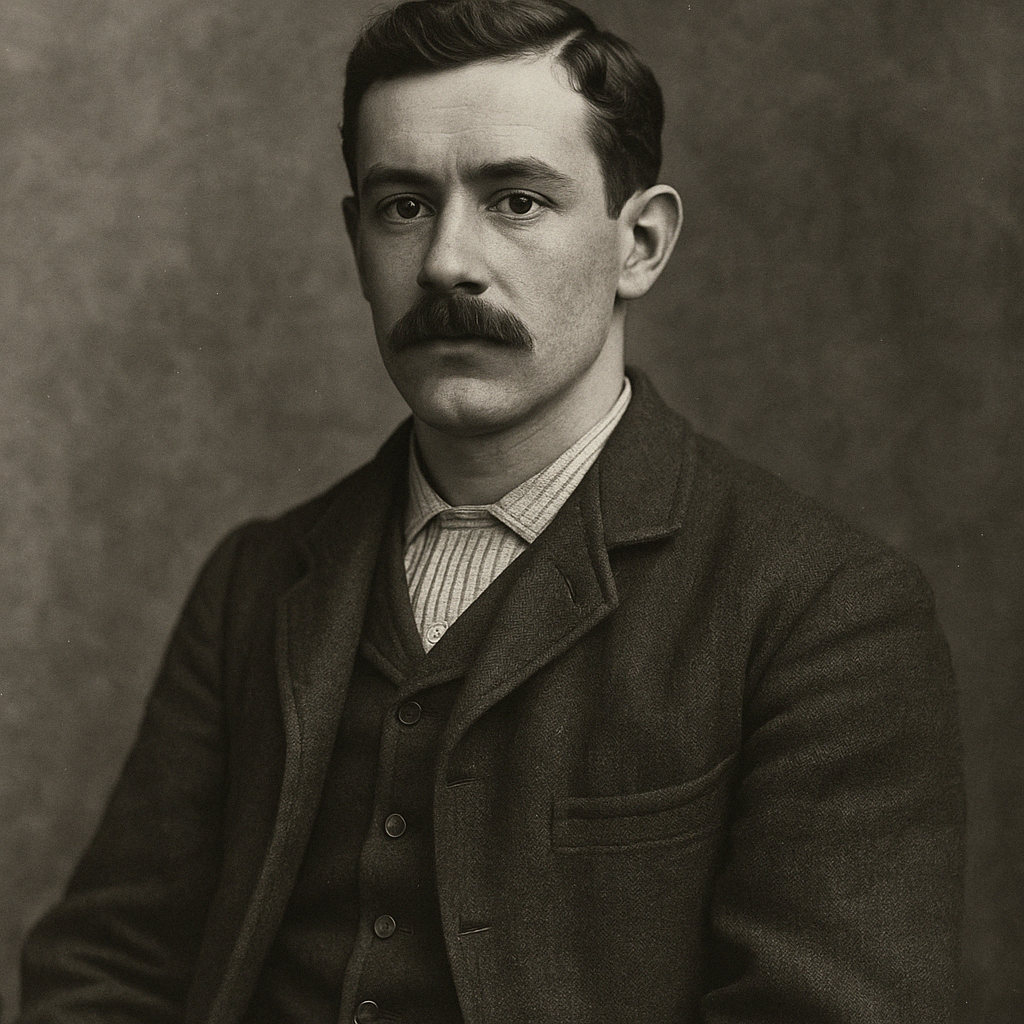
Age: 25
Service: 1877–1881
Notable for: Repaired clocks that had never stopped. Created silent pendulums. Fate: Disappeared during bell calibration.
Clock Technician
Born: 29 September 1852, Market Harborough, Leicestershire
Entered Service at StormCroft House: February 1877 (age 25)
Final Entry: October 1881 — “disappeared during bell calibration”
Filed Under: Chronometric Disruption Protocols / Internal Temporal Fault Index
Background
Merritt Vale was born the son of a tailor and a church bell-ringer. From a young age, he demonstrated an uncanny sense of internal rhythm. He was said to be able to wake unaided at exact times down to the second, and could distinguish between identical ticking clocks by “tone of purpose.”
Educated in part by a retired horologist, he apprenticed at a watchmaker’s shop in Birmingham before setting out as a freelance time restorationist, specialising in clocks that had stopped during traumatic events — fires, collapses, sudden deaths. He believed clocks “stored interruption like bruises” and sought to “re-teach them how to resume.”
A letter from this period reads:
“Time is not a river, but a loop that forgets which part it is meant to repeat.”
Life at StormCroft House (1877–1881)
Brought to StormCroft during its Temporal Stabilisation Initiative, Merritt was tasked with:
-
Synchronising house clocks across all floors and sublevels
-
Designing “silent pendulums” for areas where tick-sound induced echo feedback
-
Calibrating chronometers used in containment monitoring, especially during “memory fractures” or failed device trials
-
Tracking intervals in The Violet Corridor, where time was known to “soften”
His greatest work was the Annulet Array, a set of 12 interlinked timepieces that operated in relay — one chiming only when another fell silent. Installed throughout the house, they provided what Finch described as “aural cushioning for shared temporal load.”
Personality & Private Habits
Merritt was meticulous, withdrawn, and frequently observed watching others breathe as if counting time via lungs. He kept a “Second Ledger,” a book where he logged how many seconds passed between events that should have been simultaneous — doorbell and knock, flash and thunder, thought and speech.
He once claimed that the attic clock began ticking in reverse whenever Willet Gorse entered the greenhouse. Gorse denied this, but avoided the attic thereafter.
Merritt:
-
Spoke almost exclusively in one-sentence statements
-
Filed dream logs entirely in Roman numerals
-
Wore three watches: one standard, one inverted, and one containing no hands
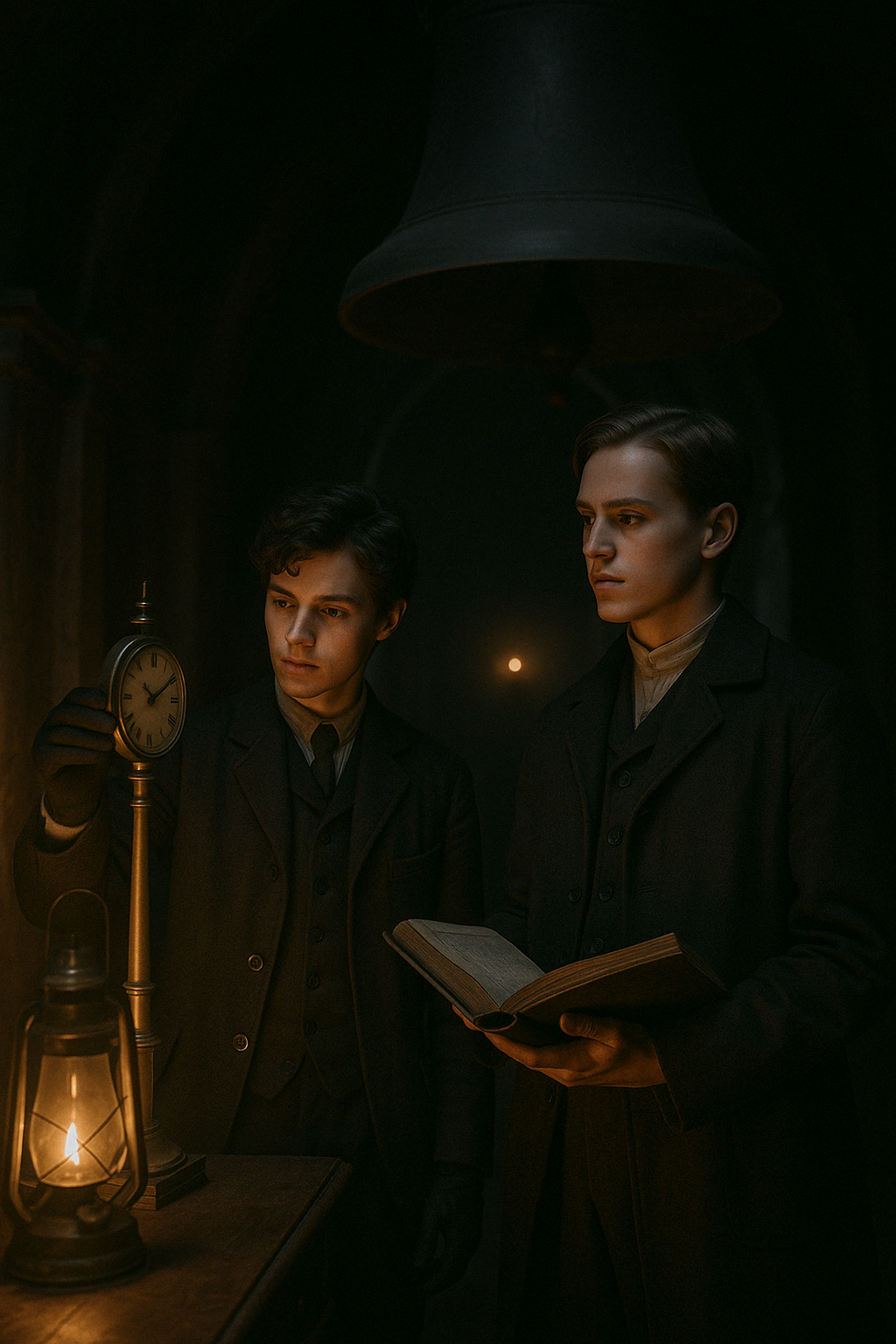
A sepia-toned photograph captures adolescent Merritt Vale and Elias Dunbridge moments before a calibration session at StormCroft House. Merritt stands beside a brass timepiece, tools in hand, while Elias observes in silence, clutching his ledger. The suspended bell looms behind them, its shadow bending oddly across the tiled floor.
He was close to Elias Dunbridge, with whom he shared notes on “recurrent present moments.” A note from Dunbridge reads:
“Vale doesn’t believe in time. He believes in echoing intention.”
Notable Projects
-
Room 11-S Regulator: Clock system designed to only tick when occupants were thinking of someone else
-
The Croft Loop Dial: A timepiece that reversed when touched by someone carrying unresolved memory
-
The 3:19 Incident Protocol: Devised after discovering that a majority of internal clocks stopped at exactly 3:19am during echo surges
Final Incident
In October 1881, Vale undertook a full recalibration of the Bell Chamber regulator, a mechanical clock mounted on the wall of the one room never entered with sound.
He entered the chamber alone at 2:58am. The chamber was sealed for recalibration; no other personnel were permitted within thirty feet. At 3:19am, all clocks on the second floor stopped — including the regulator he was adjusting.
When the door was opened, Vale was gone. The room was empty. Tools neatly arranged. The clock was ticking again — but at a rhythm 1.17% slower than it had ever ticked before.
The Bell Chamber has never since been recalibrated.
Legacy & Residual Events
-
A handwritten note was found tucked behind Clock 4A:
“Tick forward, blink back. That’s how they fold us.”
-
His Annulet Array still functions in partial relay — though it occasionally strikes thirteen
-
The Grand West Corridor clock is known to start ticking whenever someone speaks his name near it — even when disconnected
Dr. Finch remarked, five years after the incident:
“Merritt left through a second. A space we never noticed between ticks.”
Rowley Gant – Hall Custodian
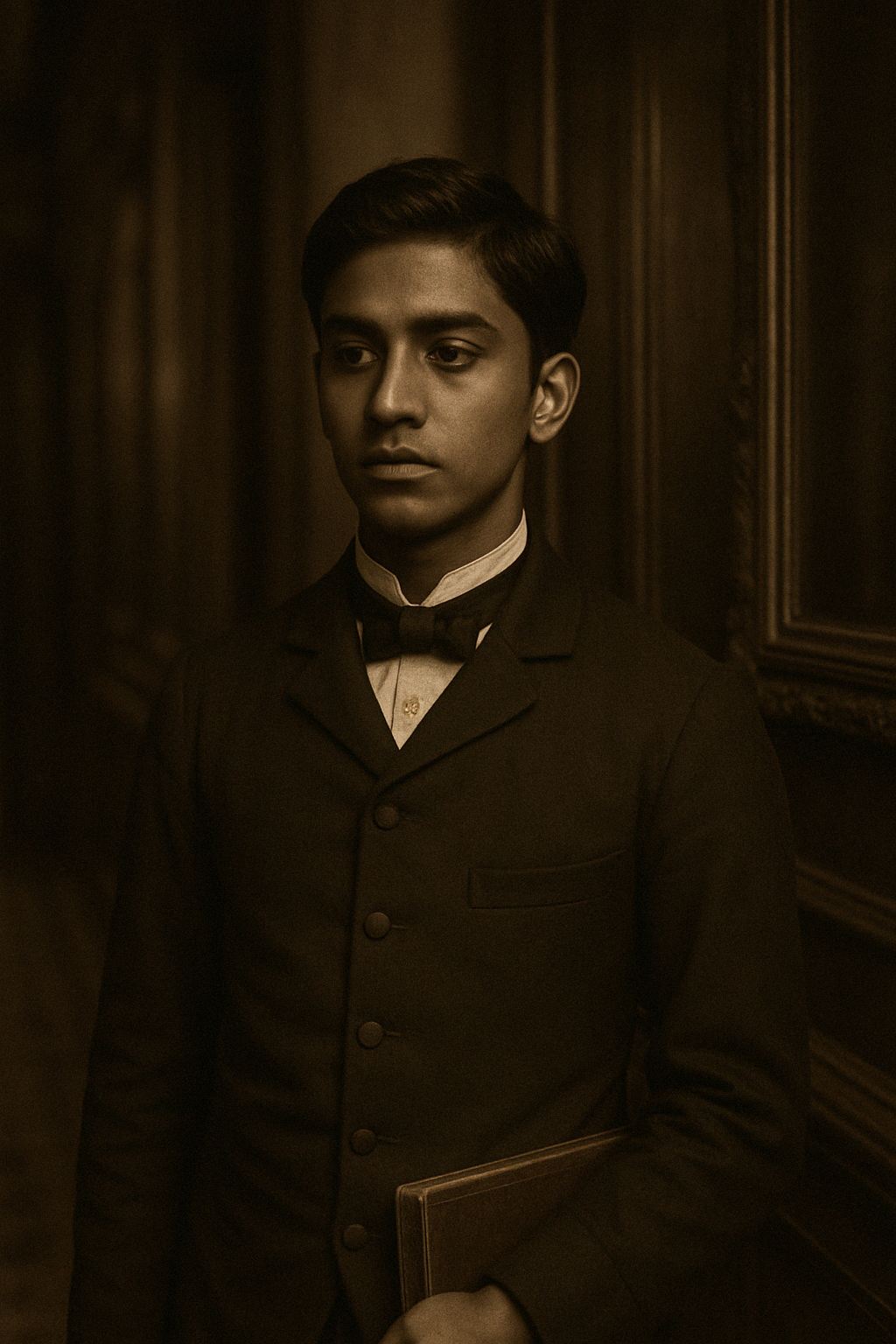
Age: 19
Service: 1890–1893
Ethnicity: South Asian (adopted by Octavius Wren)
Notable for: Spoke only to mirrors. Logged every sound made in the eastern corridor. Fate: Found locked in Observation Lounge, journal sewn shut.
Hall Custodian
Born: 2 October 1871, Madras Presidency, British India
Brought to England: 1881 (adopted by Octavius Wren)
Entered Service at StormCroft House: May 1890 (age 19)
Departure: Unclear — found locked in the Observation Lounge, journal sewn shut
Filed Under: Behavioral Mirror Events / Silent Induction Logbook
Background
Rowley Gant was born in the port city of Madras, the son of a Tamil interpreter and a British telegraph engineer. Orphaned at age nine during a station collapse near Vellore, he was placed into care by the East India Company’s civil bureau and informally adopted by Octavius Wren, then visiting India to consult on logistics for experimental rail lines.
Wren brought the boy back to Devon in 1881. Rowley received a modest private education — Latin, French, geometry — but showed early signs of social withdrawal. His only lasting hobby appeared to be sketching hallways and door frames from memory — always from impossible angles, as if viewed from ceilings or behind walls.
Life at StormCroft House (1890–?)
By age nineteen, Rowley had been placed at StormCroft House as a Hall Custodian. His official duties were:
-
Polishing the corridors and mirror frames
-
Logging disturbances in the stairwell acoustic fields
-
Ensuring that the Bell Chamber’s threshold remained undisturbed
However, his logs soon took on unusual characteristics. Rather than listing dust levels or cleaning times, Rowley began documenting:
-
Every footstep heard during silence hours
-
Echo patterns from spoken words near reflective surfaces
-
Moments of visual distortion when walking past the east-facing mirror in the second-floor corridor
Mirror-Focused Behaviour
Rowley developed a reputation among staff for:
-
Speaking only to mirrors (never directly to people)
-
Polishing glass obsessively — not until clean, but until it “responded”
-
Staring into reflections long past the point of recognition
He claimed the hallways held “memories in negative,” and once remarked to Elias Dunbridge:
“We pass through the house, but the house watches only what bounces back.”
His journal entries — mostly written backward — describe dreams of people he’d never met reflected in surfaces behind him, and the sensation of seeing rooms before entering them.
Private Life & Relationships
Rowley had no known friendships among the servants, but was intensely fixated on Merritt Vale, the Clock Technician. He followed his calibration routines, often observing from adjacent mirrors. A page from Rowley’s dream journal reads:
“He counts seconds. I collect shadows. Between us, time forgets which one came first.”
Staff also noted that Rowley would stand at the base of the Bell Staircase during Finch’s midnight walks — not speaking, not moving — simply mirroring his breathing.
Final Events & Containment
In December 1893, Rowley was reported missing after failing to appear for the 3am corridor rotation. He was found hours later, locked from the inside in the Observation Lounge — a sparse, mirrorless room used to induce memory reset through isolation and verbal reflection.
He was sitting on the centre stool, his journal sewn shut with black thread, eyes open, pulse steady. He spoke only once, when asked who had locked the door:
“I answered a knock that came from behind the looking.”
The journal remains unopened. Attempts to cut the thread result in dull blades and slight tremors in nearby furnishings. The front of the journal is embossed with three symbols: an eye, a door, and a clock face with no hands.
He was never officially discharged, and his name continued to appear in hallway echo logs until at least 1899.
Legacy
-
His mirror in the east corridor fogs over in the shape of a face when exposed to windless rooms
-
Finch wrote of him:
“Gant wasn’t reflecting the house. He was reflecting what it had forgotten.”
-
A hallway recording made in 1981 registers a whisper repeating:
“Still here. Still here. Still here.”
Thane Merrow – Bath Steward
Age: 24
Service: 1882–1885
Ethnicity: South Asian (adopted by Octavius Wren)
Notable for: Believed water retained memory. Drew floorplans in condensation. Fate: Dismissed after insisting all guests rinse “before arriving.”
Bath Steward
Born: 8 August 1860, Bombay, British India
Adopted by Octavius Wren: 1871
Entered Service at StormCroft House: January 1882 (age 21)
Dismissed: May 1885
Last Recorded Statement: “All guests must rinse before arriving.”
Filed Under: Hydro-Perception Registry / Ritual Hygiene Directives
Background
Thane Merrow was born in colonial Bombay to unknown parentage and adopted at age 11 by Octavius Wren, who was at the time consulting on the Bombay-Baroda railway junction. Wren described the boy as “visually gifted, rhythmically fixated, and incapable of being startled by thunder.”
Brought to England in 1872, Thane was privately educated and remained largely silent throughout his childhood. He was drawn to water — not swimming, but observing it. He was known to sit beside basins, puddles, and cisterns for hours, watching the way reflections shifted when no one moved.
At 17, he began keeping a journal of cleansing rituals observed from various cultures, often annotated with personal notes on water temperature, ripple radius, and how long the skin should forget before it’s ready to remember again.
Life at StormCroft House (1882–1885)
Merrow was appointed Bath Steward, a seemingly minor role within the estate. But StormCroft’s bathing rooms were unlike those found in other manors — many were designed with acoustic resonance cavities, ash runoff traps, and mirrorless copper piping, designed to “strip cognitive resonance from the skin.”
Thane’s daily tasks included:
-
Preparing bathwater for residents and select guests
-
Adding non-standard substances (chalk, lavender, salt, crushed iron filings) as per Finch’s directive
-
Drawing diagrams in condensation after each bath — none of which ever repeated
-
Regulating the South Spiral Shower, believed to emit a tone that altered perception
He was also one of only two staff members permitted to clean the Glass Basin in the Violet Corridor washroom — a sink said to show faces not yet met when the moon was half-full.
Personality & Behaviour
Thane was quiet, methodical, and deeply observant. He was known to:
-
Smell the water before speaking
-
Tap the edge of every tub three times before entering
-
Refuse to let anyone bathe if they had not first touched stone
When reprimanded for leaving the east tub running overnight, he simply wrote:
“The water needed to complete its reflection.”
He was closest to Alton Reys, the Laundry Assistant, and the two are believed to have shared written rituals and soap formulas involving linen purification. Alton’s dream journal contains multiple references to “Thane’s rhythms” and one recurring phrase:
“He cleans the future off of people.”
Incidents and Dismissal
By 1885, Thane had begun insisting that all guests undergo a cleansing ritual prior to arrival — not after. This included those who had not yet been invited. When asked for justification, he replied:
“They’re already tracked with elsewhere. We must rinse them to keep the rooms aligned.”
He was discovered one night attempting to bathe a copper mannequin used for thermal echo testing. When confronted, he said, “This one’s already been somewhere.” It was the final infraction.
He was dismissed on May 2nd, 1885 — though his access key was never returned, and water in the Glass Basin occasionally runs warm when no pipes are active.
Legacy
-
The South Spiral Shower still emits faint humming when the moon is waning
-
A ceramic vial of his ash-lavender cleansing powder was recovered in 1991, still perfectly dry and warm to the touch
-
Finch later commented:
“Merrow’s methods were unorthodox, but not wrong. The skin is a surface — and surfaces transmit.”
“Matthew” – Undocumented Caretaker / Watcher

A sepia-toned, atmospheric photograph believed to capture “Matthew,” the undocumented caretaker known only through marginal notes and servant whispers. Standing partially obscured in shadow, the solitary figure gazes out from an alcove near the East Wing. No official records confirm his employment, yet his presence appears in sketches, half-remembered staff accounts, and a torn payroll page dated 1877 with the single word: “Observer.”
Rumoured to appear only during silence hours, Matthew was said to know which doors would open before they were touched — and to write names before they were spoken.
Age: Unknown
Service: Undocumented (likely 1874–1878)
Notable for: Appears in sketch of Black Room ritual. Possibly a seer. Never ate. Never slept. Fate: Final note in Finch’s clock: “Matthew stayed after the echo. The room liked him.”
Role: Undocumented Caretaker / Watcher
Age: Unknown
Service Period: Unverified; believed active between 1874–1878
First Appearance: Sketch titled “Observation of the Black Room Door,” dated 1874
Final Reference: Handwritten note found in Finch’s broken clock — “Matthew stayed after the echo. The room liked him.”
Filed Under: Uncredentialed Personnel / Sentient Witness Risk
Origins & Uncertainty
Unlike all other StormCroft staff, Matthew has no formal record of hire, payment, or origin. He is not listed in ledgers, intake documents, or servant rosters. Yet his presence is undeniable.
He appears in three separate documents:
-
A 1874 pencil sketch by Octavius Wren showing a tall, cloaked figure standing at the Black Room Door, observing silently.
-
A pantry inventory note from 1875 that reads: “Matthew left the basin warm. No one else was assigned to wash.”
-
Finch’s handwritten note (sealed inside a brass-tuned timepiece): “Matthew stayed after the echo. The room liked him.”
Some believe he was not hired, but found — already in the house when construction began.
Physical Description
Descriptions are inconsistent, but recurring traits include:
-
Always cloaked, regardless of season
-
Face partially obscured — some claimed a bandage, others a veil
-
One hand gloved, the other always bare
-
Eyes described as “tired, but always already watching”
One servant swore they saw him step into a mirror reflection — but couldn’t find his actual body in the room.
Duties (Known & Inferred)
Though never formally assigned, “Matthew” is said to have:
-
Monitored the Bell Chamber perimeter during bleed intervals
-
Accompanied guests through the Low Salon, remaining silent throughout
-
Tended to the Observation Lounge, preparing the room before memory reversals
He was reportedly always present at “closed door” rituals — yet no one recalls inviting him.
In 1876, following the collapse of a resonance event in the third sublevel, a note in Dunbridge’s private ledger reads:
“Matthew did not run. He turned his back to the hum and stood still. The floor didn’t buckle where he was.”
Relationships & Influence
“Matthew” was neither friend nor enemy to any specific staff member, yet several servants left indirect references to him in dream journals and marginalia. These include:
-
Alton Reys: “He hums the moments before things happen.”
-
Willet Gorse: “Soil is quieter after he walks on it.”
-
Rowley Gant: “He does not reflect. He absorbs.”
Only Finch acknowledged Matthew directly in official records, once calling him “our unasked-for confidant — and therefore the most trustworthy.”
Events & Final Mentions
In late 1878, following the third sealing of the West Wing, Matthew ceased to appear. No mention of him exists after this point — but his effects remained.
-
A cloak still hung in the outer chamber of Room 37
-
A key was found in the Observation Lounge, marked simply “Ↄ” (reverse C)
-
The mirror in the unused dressing room began to fog at chest height only, regardless of temperature
In 1984, a note was discovered hidden within the wall of the Bell Chamber:
“Do not follow Matthew. He does not walk into places — he lets them form around him.”
Legacy & Ongoing Presence
-
During deep cold, the floors of certain unused hallways retain barefoot prints — always dry, always leading nowhere
-
The tuning fork kept in the Dream Reversal Cabinet vibrates faintly when placed near Room 37 — a room he was last seen entering
-
No one recalls speaking to him. Only being noticed by him
Dunbridge, in his final month of service, wrote in ash:
“If memory has a gardener, it is Matthew. And he weeds what we’re not ready to remember.”
“Matthew” is not forgotten — because he was never really named. He was simply seen, when it mattered most.
Edwin
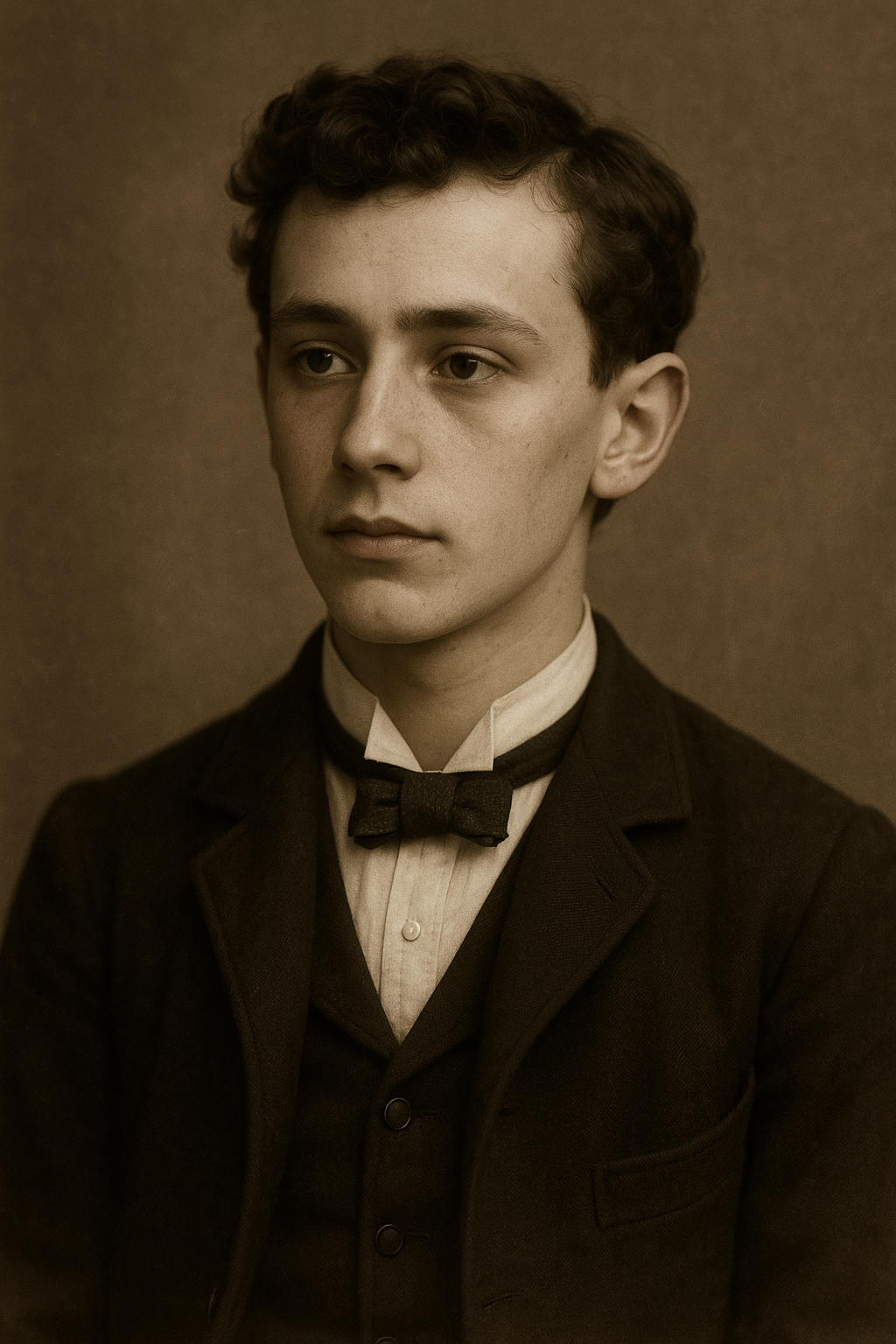
A sepia-toned portrait of Edwin, captured in rare repose at approximately age 17, a year into his service at StormCroft House. His uniform is modest but precisely kept, the collar softened by constant washing. A calm, steady gaze suggests quiet resilience. Beloved by many of the household, Edwin’s duties were uniquely intimate — tending not only to physical cleanliness but to emotional grounding. Despite his youth, his presence was described as “older than the house itself.” This image was recovered from a sealed envelope in the archive marked simply: “He held us together.”
Role: Personal Attendant / Domestic Steward of Intimate Care
Born: Estimated 1871 (location unknown)
Joined StormCroft House: 1887 (age 16)
Departed: 1890
Final Sightings: Working with London telegraph boys; later listed in reports linked to the Cleveland Street scandal
Filed Under: Personnel Records – Special Access / Emotional Equilibrium Division
Background & Early Years
Little is known of Edwin’s life before arriving at StormCroft House. He claimed no known surname and gave no fixed place of birth. House records simply list him as “Edwin, domestic entrant – verbal referral only”, with a recruitment note marked in Dr. Finch’s hand:
“The boy understands attention. Let him be where comfort is needed.”
Staff journals suggest Edwin was cheerful, unintrusive, and naturally attuned to others’ discomforts. He was offered housing in a private quarters adjacent to the bathworks and linen chamber — a room normally reserved for senior servants.
Role at StormCroft House
Edwin’s duties were both unique and highly valued. He was responsible for:
-
Washing and massaging staff at the end of their shifts
-
Personal garment care, including deep-cleaning and preservation of undergarments for all servants
-
Ensuring clean bedding, oil cloths, and comfort items were regularly maintained
-
Discreetly attending to minor injuries, emotional strain, and sleeplessness among staff
It was an intimate but non-exploitative role, seen by all staff as a privilege to receive and a point of stability in the high-strain environment of StormCroft House.
His attention to personal comfort was believed to reduce psychological echo buildup, which Finch theorised was “aggravated by bodily dissonance and soiled memory anchors.”
Involvement in StormCroft Experiments
On at least two occasions, Edwin was listed as a subject-observer in minor experiments involving:
-
Sensory grounding using tactile repetition (massaging servants during containment cool-downs)
-
Emotional rebalancing after exposure to the Bell Chamber hum
-
Testing garments laced with “memory-absorptive threads” (finely-woven garments intended to “soften” traumatic retention)
He was described by Finch as:
“A balm in boy-form. Utterly reliable. His presence lowers the noise in a room by several degrees.”
Relationships and Affection
Edwin was universally adored. Notes from Samuel Rooke, Alton Reys, and even the Morris Brothers suggest deep trust and affection. A surviving thank-you card, written by Willet Gorse, reads:
“Edwin, you make silence gentle. I would forget myself in your hands if the house allowed it.”
Despite the closeness, Edwin remained modest and unassuming, rarely speaking unless offering a towel or a word of encouragement. He never asked for praise, and refused all gifts — except for a small silver comb, which he kept on his person until the day he left.
Departure and Final Record
In 1890, Edwin left StormCroft House quietly and with no conflict. A notation in the registry states:
“Edwin—Departure approved. Services deeply valued. Recommend for gentler surroundings.”
He relocated to London, where he was briefly employed in the telegraph boy corps — a popular but fraught line of work for working-class youth. He was later named in association with the Cleveland Street Scandal, a real-life Victorian event in which several young men employed in the telegraph service were implicated in a secret network of high-society clientele.
Though Edwin was never arrested or charged, his name appears in parliamentary transcripts as a “minor witness of tender disposition.”
Finch’s final note on Edwin reads:
“He gave more than he took. The house exhaled when he left. That is not criticism — merely observation.”
Legacy
-
A handwritten poem in Edwin’s handwriting, titled “Still Hands, Still Water”, was found sewn into a mattress in the south servant quarters
-
His silver comb was recovered in 1983 from behind a false panel in the laundry corridor — still clean, still warm
-
Whispered servant folklore maintains that “Edwin’s Room” never took another occupant
Filed under: Memory Anchor Personnel – Emotional Liaison Role (Unofficial)
Summary
These fourteen male servants (plus Edwin) formed the human infrastructure of StormCroft House — not just in function, but in resonance. Their disappearances, records, and rituals suggest the house did not merely require maintenance.
It required witnesses.
Filed under StormCroft Registry: Household | Memory Anchors | Level IV Echo Risk.
